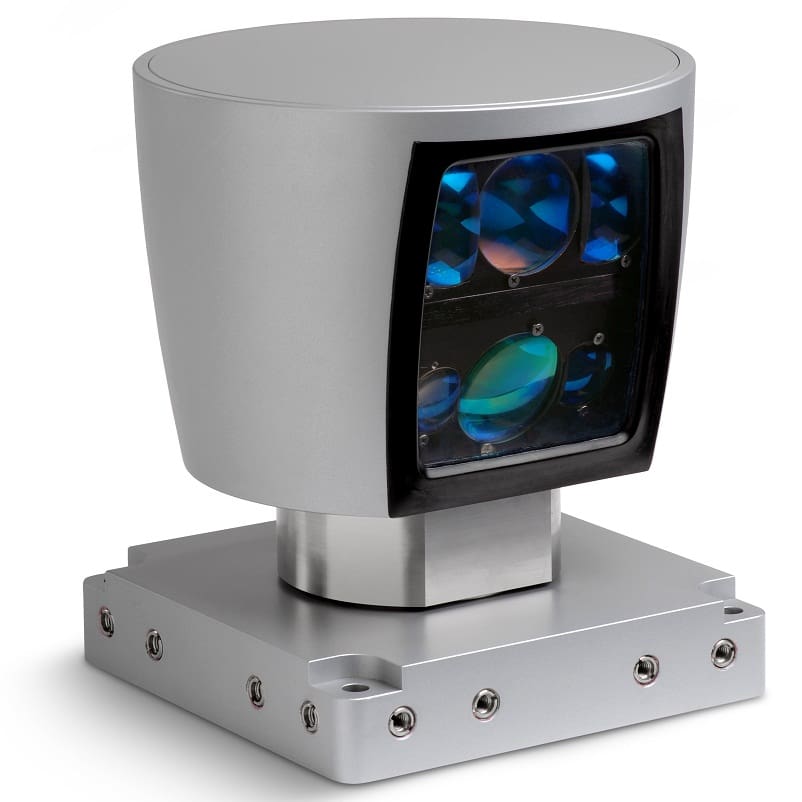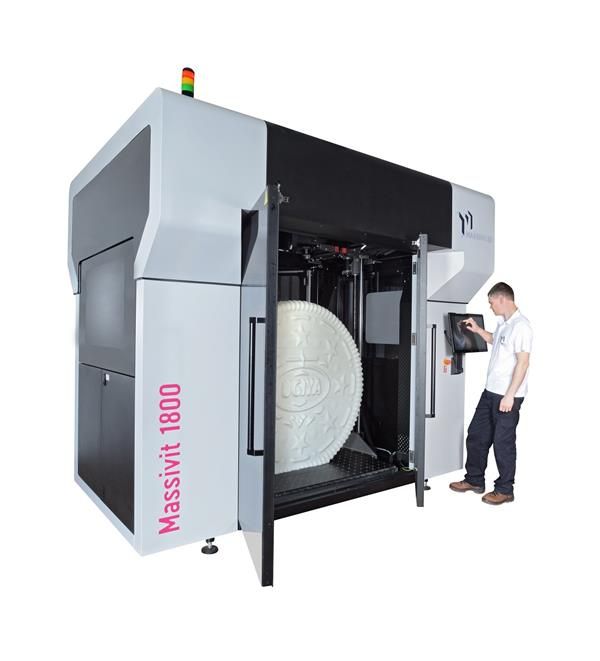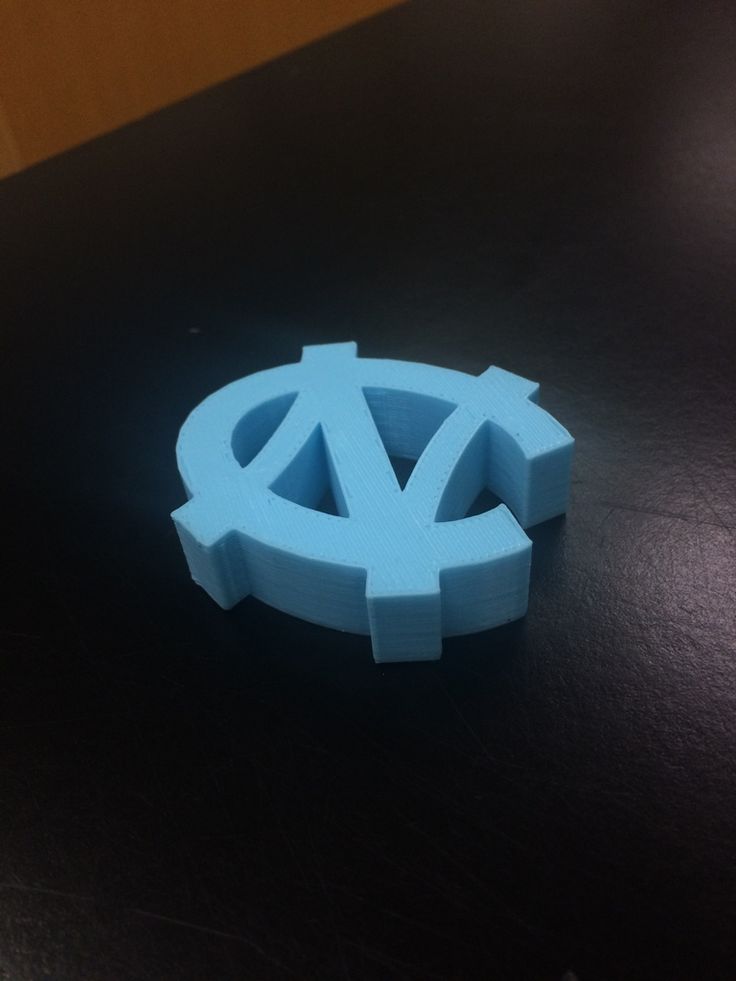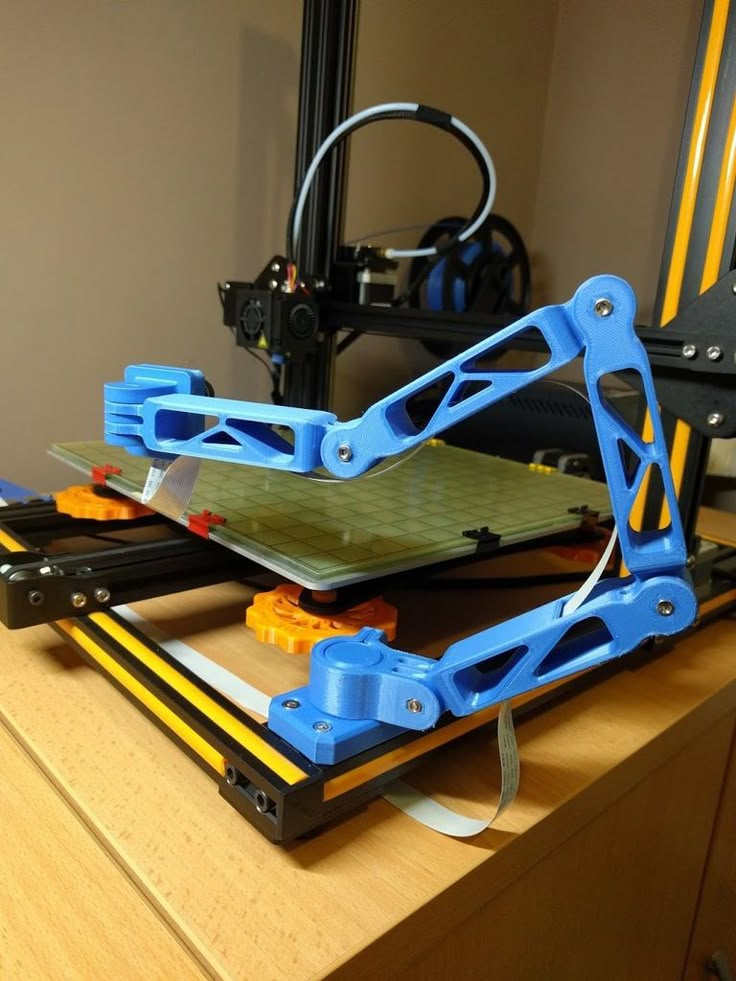All metal 3d printer review
Best metal 3D printers in 2022: comprehensive overview
What is the best metal 3D printer in 2022?
Over the past few years, there has been a surge in both supply and demand for metal 3D printers.
Manufacturers are launching metal additive manufacturing machines that are faster, easier to use, and more powerful with an increasing number of compatible metals.
Many businesses are adopting these 3D metal printing technologies to produce cost-effective metal parts and prototypes, benefiting as well from increased freedom of design linked to additive manufacturing. They are suitable for a variety of industries such as aerospace, automotive, health, engineering, and more.
Although metal 3D printer prices have been slowly and slightly decreasing, these machines are still relatively expensive acquisitions, mostly ranging from $80K to almost $1M.
With our metal 3D printer selection, we aim to provide a comprehensive overview of what’s available from well-established and distributed brands, at various price points, and with different metal 3D printing technologies.
The best metal 3D printers in 2022
| Brand | Product | Build size | Country | Price Approximate starting prices based on supplier-provided information and public data. Prices may vary by region, over time and do not include additional products or services (taxes, shipping, accessories, training, installation, …). | |
|---|---|---|---|---|---|
| Markforged | Metal X (Gen 2) | 300 × 220 × 180 mm11.81 × 8.66 × 7.09 in | United States | $ 99,500125 000 €88,260 £14,831,072 ¥ | Quote |
| Desktop Metal | Studio 2 | 300 × 200 × 200 mm11.81 × 7.87 × 7.87 in | – | $ 110,000110 000 €97,574 £16,396,160 ¥ | Quote |
| Xact Metal | XM200C | 127 × 127 × 127 mm5 × 5 × 5 in | United States | $ 110,000100 000 €97,574 £16,396,160 ¥ | Quote |
| Pollen AM | Pam Series MC | ⌀ 300 x 300 mm | – | $ 140,000135 000 €124,186 £20,867,840 ¥ | Quote |
| TRUMPF | TruPrint 1000 | 100 × 100 × 100 mm3.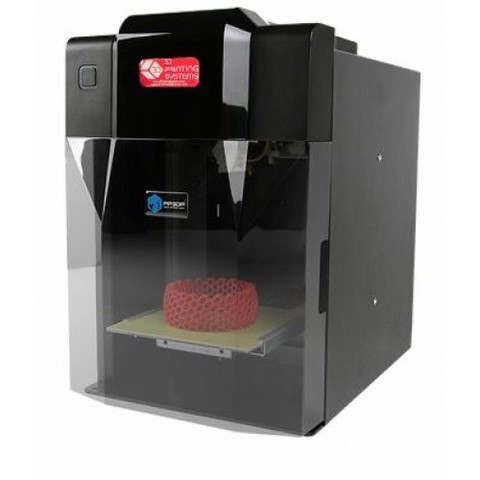 94 × 3.94 × 3.94 in 94 × 3.94 × 3.94 in | – | $ 170,000170 000 €150,797 £25,339,520 ¥ | Quote |
| 3D Systems This brand is a certified partner from our network. | DMP Flex 100 | 100 × 100 × 80 mm3.94 × 3.94 × 3.15 in | – | $ 245,000245 000 €217,325 £36,518,720 ¥ | Quote |
| EOS | EOS M 100 | 100 × 100 × 95 mm3.94 × 3.94 × 3.74 in | Germany | $ 350,000350 000 €310,464 £52,169,600 ¥ | Quote |
| XJet | Carmel 700M | 501 × 140 × 200 mm19.72 × 5.51 × 7.87 in | – | $ 599,000599 000 €531,337 £89,284,544 ¥ | Quote |
| Desktop Metal | Production System P-1 | 200 × 100 × 40 mm7.87 × 3.94 × 1.57 in | United States | upon request | Quote |
| Digital Metal | DM P2500 | 203 × 180 × 69 mm7.99 × 7.09 × 2.72 in | – | upon request | Quote |
| Formalloy | L-Series | 1000 × 1000 × 1000 mm39. 37 × 39.37 × 39.37 in 37 × 39.37 × 39.37 in | United States | upon request | Quote |
| GE Additive | Arcam EBM Spectra L | 350 × 350 × 430 mm13.78 × 13.78 × 16.93 in | United States | upon request | Quote |
| GE Additive | M2 Series 5 | 250 × 250 × 350 mm9.84 × 9.84 × 13.78 in | – | upon request | Quote |
| Renishaw | RenAM 500E | 245 × 245 × 335 mm9.65 × 9.65 × 13.19 in | – | upon request | Quote |
| SLM Solutions | SLM 125 | 125 × 125 × 75 mm4.92 × 4.92 × 2.95 in | Germany | upon request | Quote |
| SPEE3D | LIGHTSPEE3D | 300 × 300 × 300 mm11.81 × 11.81 × 11.81 in | – | upon request | Quote |
| TRIDITIVE | AMCELL | ⌀ 300 x 350 mm | Spain | upon request | Quote |
| Velo3D | Sapphire | ⌀ 315 x 1000 mm | – | upon request | Quote |
Expand to see more specs
Technology: The technologies listed above are main categories of metal 3D printing technologies.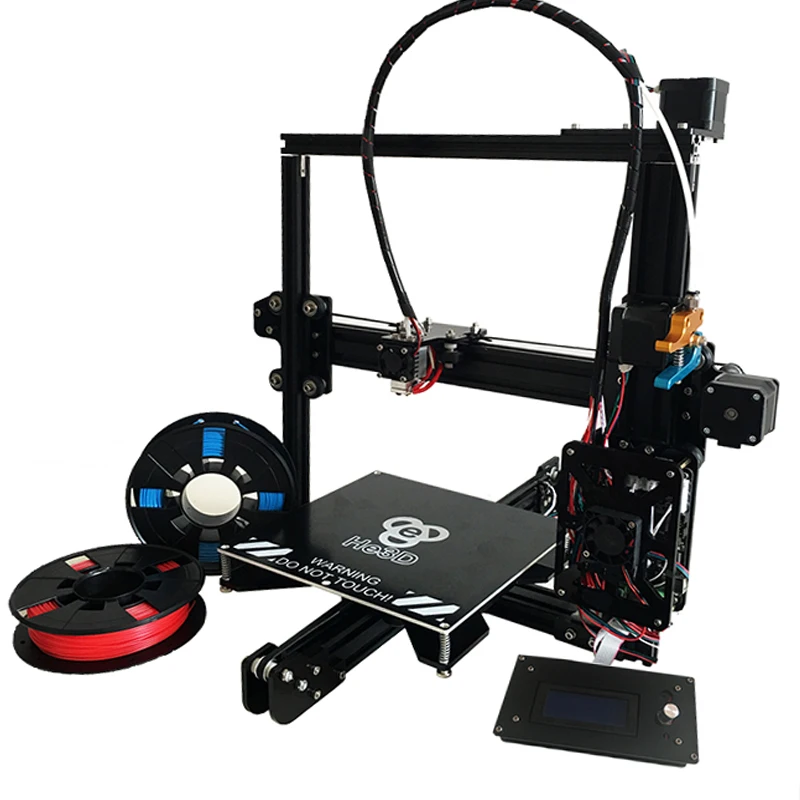 Most manufacturers have their own branded technologies, which fall into the main categories that are listed in the table.
Most manufacturers have their own branded technologies, which fall into the main categories that are listed in the table.
The products in the table are ranked by price (low to high).
| Brand | Product | Technology | Build size | Country | Price Approximate starting prices based on supplier-provided information and public data. Prices may vary by region, over time and do not include additional products or services (taxes, shipping, accessories, training, installation, …). | |
|---|---|---|---|---|---|---|
| Markforged | Metal X (Gen 2) | Extrusion | 300 × 220 × 180 mm11.81 × 8.66 × 7.09 in | United States | $ 99,500125 000 €88,260 £14,831,072 ¥ | Get a quote |
| Desktop Metal | Studio 2 | Extrusion | 300 × 200 × 200 mm11.81 × 7.87 × 7.87 in | – | $ 110,000110 000 €97,574 £16,396,160 ¥ | Get a quote |
| Xact Metal | XM200C | SLM/DMLS | 127 × 127 × 127 mm5 × 5 × 5 in | United States | $ 110,000100 000 €97,574 £16,396,160 ¥ | Get a quote |
| Pollen AM | Pam Series MC | Extrusion | ⌀ 300 x 300 mm | – | $ 140,000135 000 €124,186 £20,867,840 ¥ | Get a quote |
| TRUMPF | TruPrint 1000 | SLM/DMLS | 100 × 100 × 100 mm3.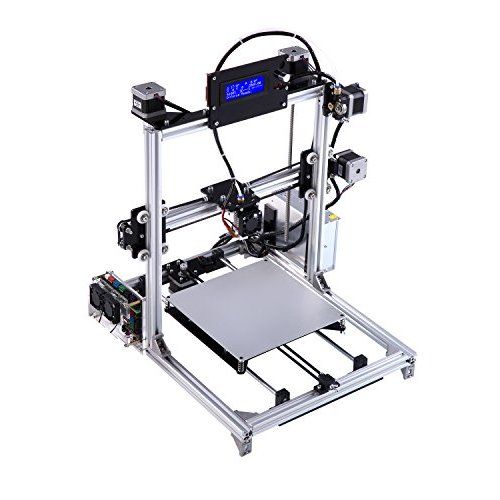 94 × 3.94 × 3.94 in 94 × 3.94 × 3.94 in | – | $ 170,000170 000 €150,797 £25,339,520 ¥ | Get a quote |
| 3D Systems This brand is a certified partner from our network. | DMP Flex 100 | SLM/DMLS | 100 × 100 × 80 mm3.94 × 3.94 × 3.15 in | – | $ 245,000245 000 €217,325 £36,518,720 ¥ | Get a quote |
| EOS | EOS M 100 | SLM/DMLS | 100 × 100 × 95 mm3.94 × 3.94 × 3.74 in | Germany | $ 350,000350 000 €310,464 £52,169,600 ¥ | Get a quote |
| XJet | Carmel 700M | Material Jetting | 501 × 140 × 200 mm19.72 × 5.51 × 7.87 in | – | $ 599,000599 000 €531,337 £89,284,544 ¥ | Get a quote |
| Desktop Metal | Production System P-1 | Binder Jetting | 200 × 100 × 40 mm7.87 × 3.94 × 1.57 in | United States | upon request | Get a quote |
| Digital Metal | DM P2500 | Material Jetting | 203 × 180 × 69 mm7.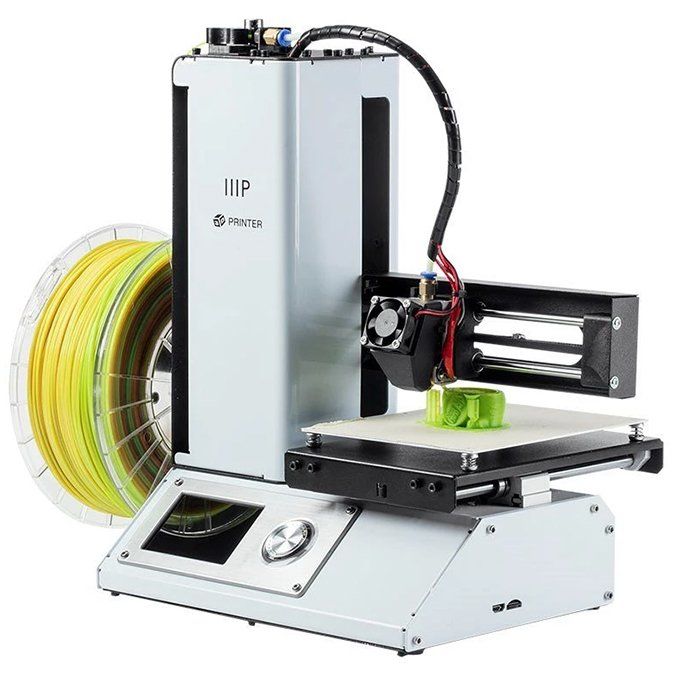 99 × 7.09 × 2.72 in 99 × 7.09 × 2.72 in | – | upon request | Get a quote |
| Formalloy | L-Series | Directed Energy Deposition | 1000 × 1000 × 1000 mm39.37 × 39.37 × 39.37 in | United States | upon request | Get a quote |
| GE Additive | Arcam EBM Spectra L | EBM | 350 × 350 × 430 mm13.78 × 13.78 × 16.93 in | United States | upon request | Get a quote |
| GE Additive | M2 Series 5 | SLM/DMLS | 250 × 250 × 350 mm9.84 × 9.84 × 13.78 in | – | upon request | Get a quote |
| Renishaw | RenAM 500E | SLM/DMLS | 245 × 245 × 335 mm9.65 × 9.65 × 13.19 in | – | upon request | Get a quote |
| SLM Solutions | SLM 125 | SLM/DMLS | 125 × 125 × 75 mm4.92 × 4.92 × 2.95 in | Germany | upon request | Get a quote |
| SPEE3D | LIGHTSPEE3D | Material Jetting | 300 × 300 × 300 mm11. 81 × 11.81 × 11.81 in 81 × 11.81 × 11.81 in | – | upon request | Get a quote |
| TRIDITIVE | AMCELL | Extrusion | ⌀ 300 x 350 mm | Spain | upon request | Get a quote |
| Velo3D | Sapphire | SLM/DMLS | ⌀ 315 x 1000 mm | – | upon request | Get a quote |
Main types of metal 3D printing technologies
The four main types of 3D metal printing technologies are:
- Metal Powder Bed Fusion 3D printing (SLS, SLM, DMP)
- Directed Energy Deposition (DED)
- Metal filament extrusion (FFF, FDM)
- Material Jetting and Binder Jetting
There are also some resin-based metal 3D printers, and metal sheet lamination 3D printers, but they are harder to come by.
It is not uncommon to see different acronyms and names for similar technologies. Each brand markets their own, proprietary methods.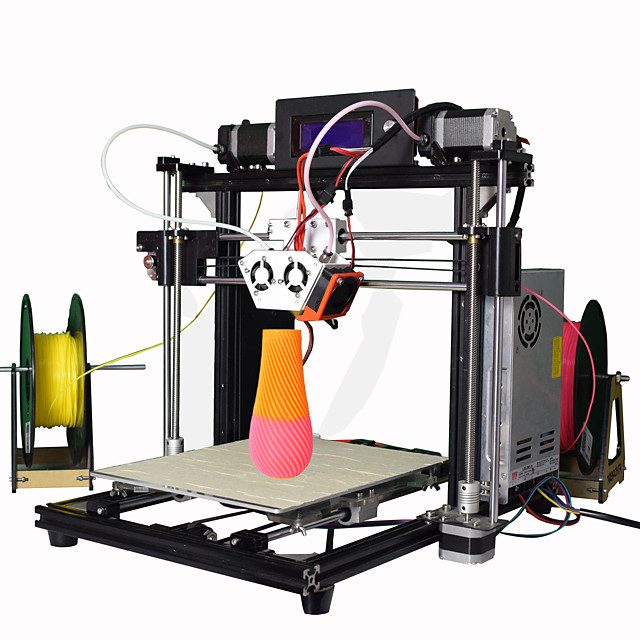 Some metal 3D printer companies even use a mix of different technologies.
Some metal 3D printer companies even use a mix of different technologies.
Here we provide a deeper look into each 3D metal printer from our list. They are grouped together according to their main 3D printing technology type (powder bed fusion, material/binder jetting, extrusion, and DED).
Extrusion-based metal 3D printer selection (FFF, FDM)
Extrusion consists of heating the material (filament) and pushing it through a nozzle. In the metal 3D printing case, the filament is generally made up of metal particles mixed into a binding agent.
After the part is 3D printed, the result is a raw object or part; it must go through several post-processing steps– such as debinding and sintering– to attain its final form.
Most extrusion-based metal 3D printing processes include these steps. The above illustration is sourced from Desktop Metal (Bound Metal Deposition™ process).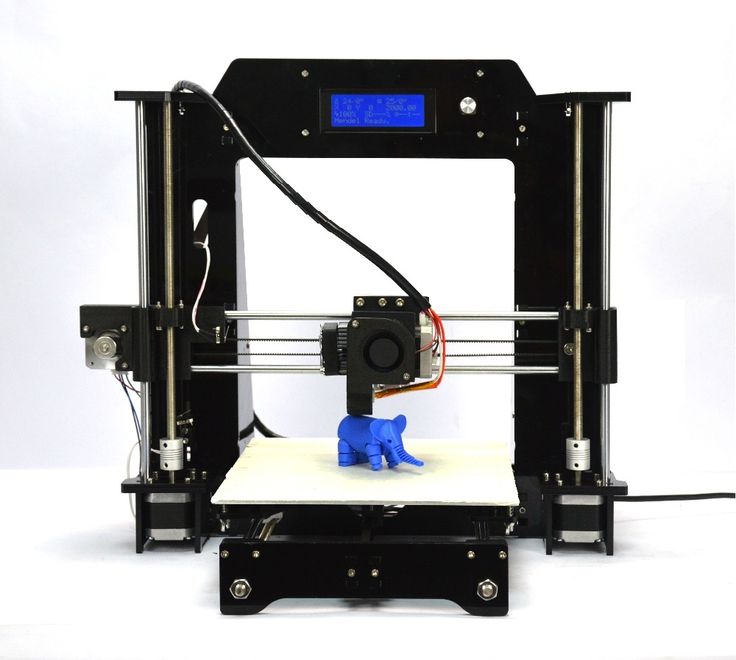
Desktop Metal’s Studio is an office-friendly, end-to-end metal 3D printing system. Aside from the printer, the Studio line also includes a debinding machine and a furnace for sintering. Indeed, parts 3D printed with this Desktop Metal 3D printer are “green”.
The Studio printer, with its proprietary Bound Metal Deposition technology, uses filament that is filled with small, metal rods. During debinding, the binding material (wax and polymer binders) is dissolved thanks to a proprietary liquid substance. The part is left porous, and must go in the furnace for its particles to fuse and densify the part.
Contact manufacturer Get a quote Add to comparison
MarkForged is specialized in continuous fiber 3D printing, but also offers metal 3D printing with their Metal X system, featuring Atomic Diffusion Additive Manufacturing (ADAM) technology.
This MarkForged 3D printer extrudes metal-filled plastic filament to form the part, which must then be washed with a special debinding fluid (Wash-1 Station) and then sintered in a furnace (Sinter-1 or Sinter-2 MarkForged machines).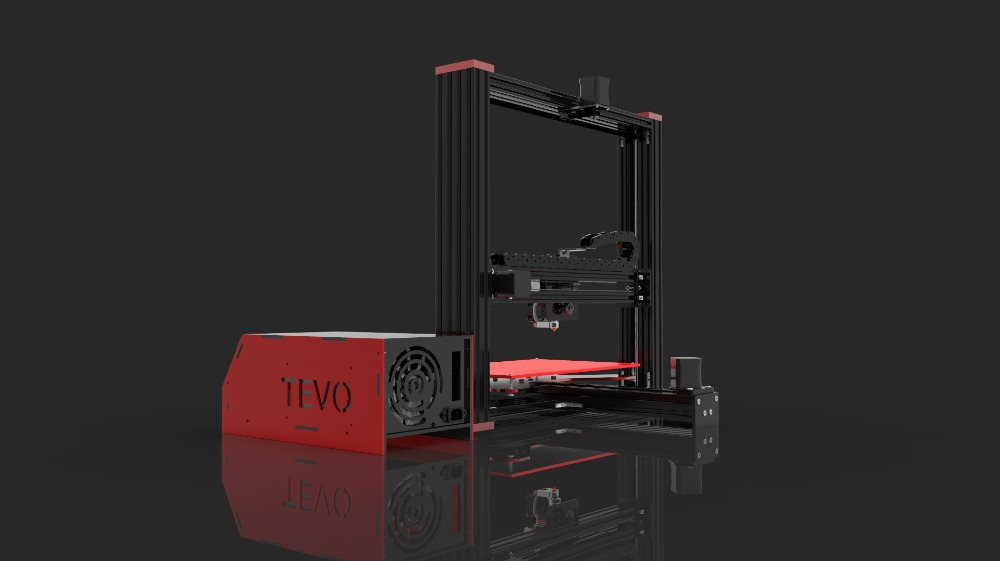
Available metal 3D printer filament includes various Steels (h23, A2, D2 tool steels, 316L stainless steel) as well as Inconel, Copper, and Titanium.
Contact manufacturer Get a quote Add to comparison
Canada-based Rapidia offers an interesting and unique way to 3D print metal. They use a water-based metal paste, which eliminates the need for chemical debinding. The water evaporates during the 3D printing process, so the part only needs to go through the furnace in order to completely solidify and attain its final form.
Confirmed, available paste types include several Stainless Steels, Inconel, and a few ceramics. Copper, Tungsten Chrome Carbide, Titanium, and various other metals are in development.
The ExOne Metal Designlab, designed in collaboration with Rapidia, works on the same basis.
Contact manufacturer Get a quote Add to comparison
Pollen AM is a French manufacturer that has been producing pellet 3D printers since 2013. Their Pam Series MC is a delta-style 3D printer (cylindrical build volume) that can print metals, ceramics, and thermoplastics.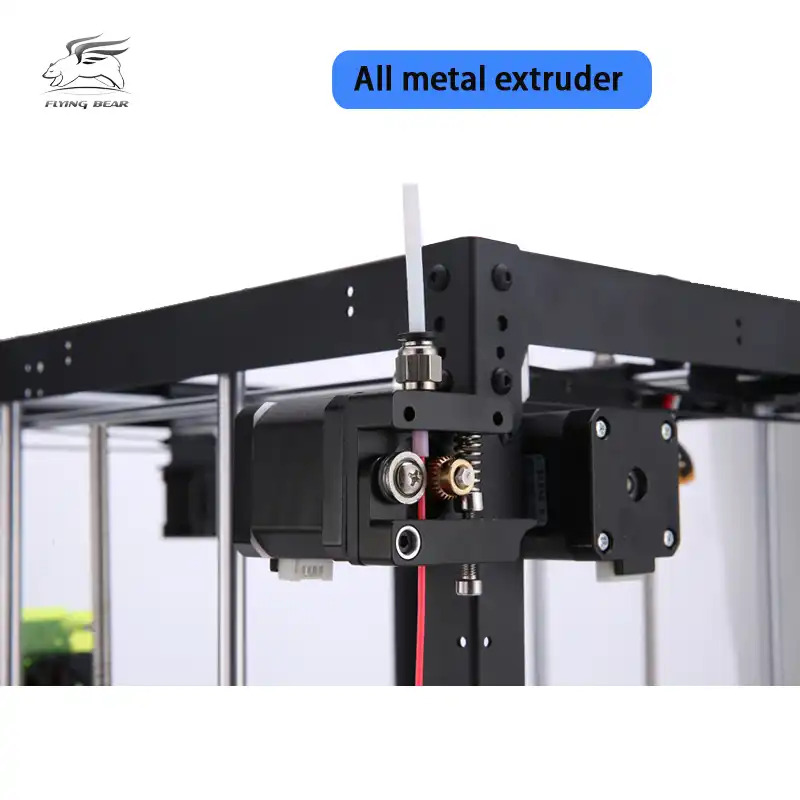
It extrudes injection-molding-grade pellets instead of metal 3D printer filament, driving material costs down significantly. Pollen AM names their technology “Pellet Additive Manufacturing”.
Contact manufacturer Get a quote Add to comparison
This machine was built with one goal: enable mass production 3D printing of metal parts 24/7. The AMCELL is fully automated, with auto feedstock control, environment control (temperatures, humidity, air filtering), and an ejection system fitted with a conveyor belt.
Rather than providing one, big build volume, the TRIDITIVE AMCELL boasts eight delta-style ø 220 x 330 mm build areas. Its eight “robots” deposit metal-infused filament to create 3D metal parts. TRIDITIVE states that resulting parts are similar to ones produced with traditional MIM (Metal Injection Molding) methods.
TRIDITIVE’s technology is called Automated Multimaterial Deposition®.
Contact manufacturer Get a quote Add to comparison
Metal powder bed fusion 3D printer selection (SLS, SLM, DMP, and more)
At the moment, the most commonly used metal additive manufacturing technology is powder bed fusion 3D printing. Simply put, the 3D printer creates objects out of a bed of powdered metal by using a powerful laser.
Simply put, the 3D printer creates objects out of a bed of powdered metal by using a powerful laser.
3D Systems, a historical actor on many 3D printing fronts, presents the DMP FLEX 100 as a fast, precise, and affordable metal 3D printer. It offers impressive part repeatability and surface finishes, of around 20 μm and 5 Ra μm respectively. DMP stands for Direct Metal Printing.
The printer comes with 3D Systems’ software 3DXpert All-in-One Software Solution for Metal Additive manufacturing. Their LaserForm metal 3D powders are certified.
Contact manufacturer Get a quote Add to comparison
This compact metal 3D printer is destined for the production of small parts in small quantities. Its material portfolio is especially interesting for medical use cases, namely dental crowns and bridges. EOS certified metal powders include Cobalt-Chrome, Stainless Steel, and Titanium.
The EOS M100’s laser spot is precise enough to provide a great level of detail, backed by 200 W of powder.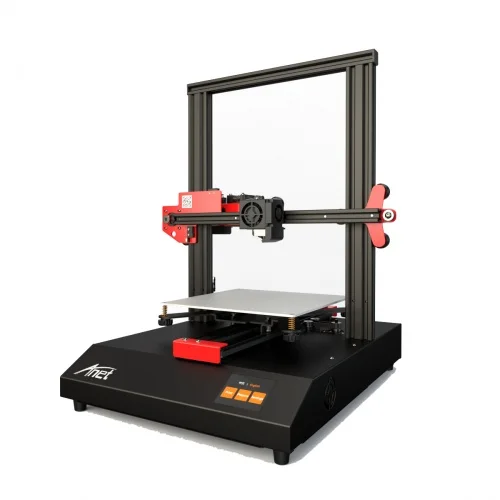
Contact manufacturer Get a quote Add to comparison
Originally a Swedish company, Arcam was acquired by GE Additive a few years ago. The Arcam EBM Spectra L is up to 20% faster than its predecessors and is able to reduce part costs by around 10%.
This metal 3D printer is dedicated to Titanium 3D printing, but Copper is in the pipeline as well. Its laser beam power is equal to 4.5 kW, partly explaining the printer’s high melting capacity and productivity. Common applications for this printer include orthopedic implants and parts for the aerospace industry.
Contact manufacturer Get a quote Add to comparison
Concept Laser is the company behind GE Additive’s M2 Series 5. It offers an easy, optimized workflow, with a separate processing chamber and handling area that is integrated into the system. This closed-loop material system ensures a safe environment that is free of powder for the operator.
The M2 metal additive manufacturing solution is compatible with a range of metals, from Stainless Steels to Aluminum, Nickel, Titanium, and Cobalt-Chrome.
Contact manufacturer Get a quote Add to comparison
The RenAM 500E is Renishaw’s entry-level metal additive manufacturing solution. It offers a relatively large build volume and powder can be handled via a dedicated glove box to avoid powder from getting free.
This system is also equipped with an oxygen sensor and a proprietary emission-filtering system branded SafeChange™.
Contact manufacturer Get a quote Add to comparison
Officially established in 2006, SLM Solutions has been a historical player in the powder bed fusion industry for many years. The SLM 125 boasts an open software architecture that allows users to tweak the system’s parameters according to specific use cases, materials, and general needs.
Options such as laser monitoring and melt pool monitoring are available for businesses that require full transparency and control over their production series.
Contact manufacturer Get a quote Add to comparison
The TruPrint 1000 is TRUMPF’s most compact metal 3D printing system, with a 100mm-tall cylindrical build volume. It is suitable for the production of small parts and prototypes, and even small production series when equipped with the multilaser option that increases the printer’s speed.
It is suitable for the production of small parts and prototypes, and even small production series when equipped with the multilaser option that increases the printer’s speed.
This metal 3D printer can be operated remotely via a tablet application, which also gives access to its onboard camera stream.
Contact manufacturer Get a quote Add to comparison
The Velo3D Sapphire is a high-volume metal 3D printer from the US designed for production series. This metal 3D printer features Velo3D’s Intelligent Fusion technology to allow for complex geometries and 0° overhangs.
The system is also equipped with a range of metrology sensors that measure each and every layer that is 3D printed.
Contact manufacturer Get a quote Add to comparison
The XM200C is Xact Metal’s entry-level metal 3D printing solution. It is suitable for both research purposes and small production series. The XM200C benefits from a proprietary Xact Core gantry system for precise movements with a fusing speed of up to 500 mm/s.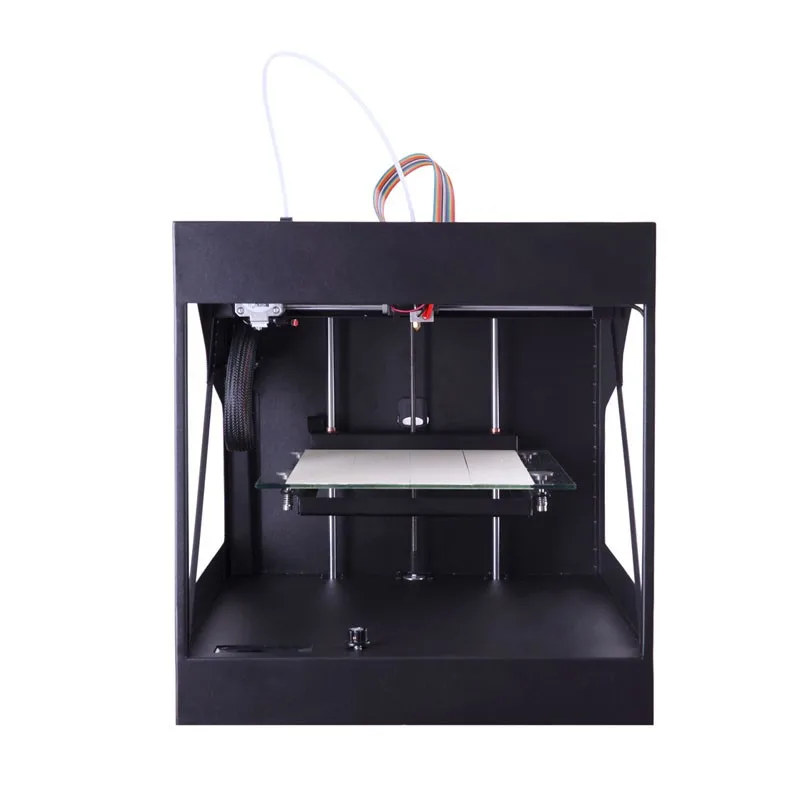
Xact Metal offers their own materials, branded Xact Powder, including various Stainless Steels, Super Alloys, Tooling Steels, Aluminum, Titanium, Bronze, and Copper. Advanced users are able to use their own metal powders if needed.
Contact manufacturer Get a quote Add to comparison
Metal material jetting and binder jetting 3D printers
Material jetting 3D printers are equipped with various inkjet printheads (somewhat similar to 2D printing) that jet material onto a surface. The material then hardens, and another layer of “metal ink” is jetted on top.
Binder jetting is a similar process, but it is a binding agent that is jetted atop a layer of powder.
The Production System by Desktop Metal was designed for mass production. It is advertised by Desktop Metal as being a fast, cost-effective metal additive manufacturing solution, with a cost per part up to 20 times lower than with other metal 3D printing systems.
This Desktop Metal 3D printer is equipped with over 16,000 nozzles that are mounted onto a “print bar” that recoats the build plate with powder at the same time, hence explaining the technology’s name: Single Pass Jetting™.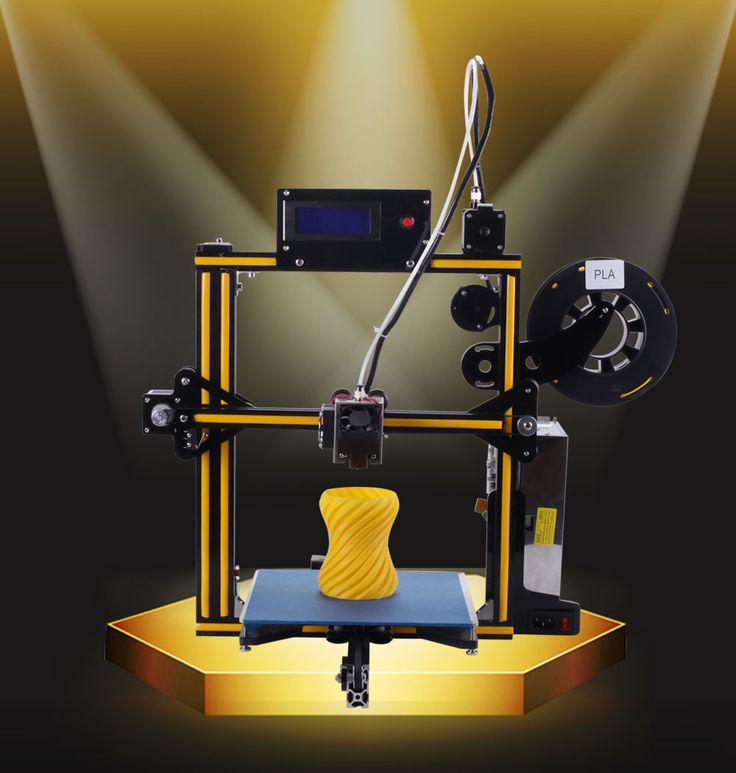
Contact manufacturer Get a quote Add to comparison
Digital Metal, a Höganäs Group company, creates incredibly detailed metal parts with their DM P2500 system. It is able to print 3D metal parts with an accuracy as high as 0.001mm (1µ), and with a medical-grade surface quality of around 0.006mm (6µ).
Another interesting feat to point out is that almost 100% of leftover powder can be recycled for future prints. This metal AM machine is able to churn out serial production series efficiently and reliably; one of the company’s first DM P2500 printers has been running 24/7 since 2013, according to Digital Metal.
The Digital Metal DM P2500 is a certified metal 3D printer (CE and UL) that is compatible with certified metal materials (ISO 22068).
Contact manufacturer Get a quote Add to comparison
Australian manufacturer SPEE3D has developed an impressively fast metal 3D printing technology called Supersonic Deposition. The technology is based on metal cold spray, using compressed air to “jet” metal powder through a nozzle at high speeds.
This enables the LightSPEE3D to 3D print at up to 100 grams per minute and with a range of metals including copper.
Contact manufacturer Get a quote Add to comparison
XJet developed an impressive, proprietary jetting technology they call NanoParticle Jetting™. This inkjet method disperses millions of tiny droplets that contain nanoparticles of solid metal. The liquid material comes in cartridges that are easy to insert into the printer.
After being printed, the metal parts must go through support removal and sintering processes to attain their final form.
Contact manufacturer Get a quote Add to comparison
DED: Directed Energy Deposition metal additive manufacturing systems
Directed Energy Deposition (DED) is comparable to filament extrusion. The metal material is pushed through a special nozzle, like with FFF/FDM, but a powerful laser beam solidifies the material at its deposition point.
Formalloy produces a range of metal DED 3D printers with up to 5 axes of motion.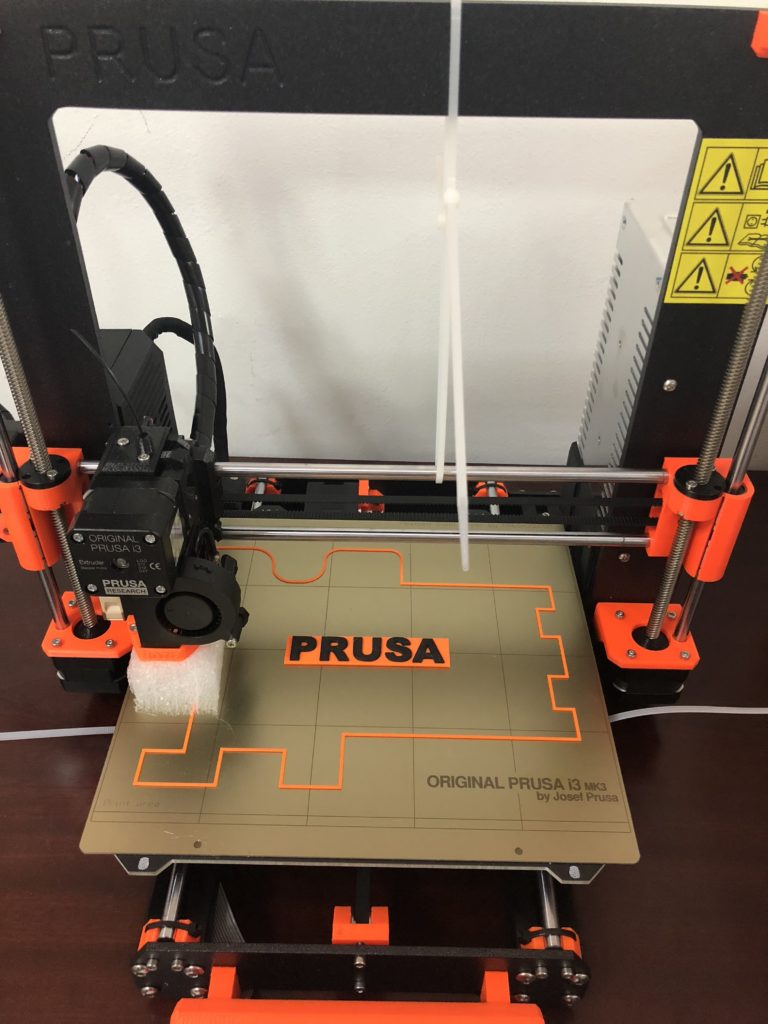 They can be used to produce metal parts but also to repair or clad existing parts.
They can be used to produce metal parts but also to repair or clad existing parts.
Different laser wavelengths are available, as well as different build volumes: 200 x 200 x 200 mm, 500 x 500 x 500 mm, and 1000 x 1000 x 1000 mm. Metal 3D printers from Formalloy can be customized depending on company requirements.
Contact manufacturer Get a quote Add to comparison
Alternative metal 3D printers and special mentions
Hybrid metal manufacturing systems
Some manufacturers are specialized in hybrid metal manufacturing systems. They combine both subtractive and additive manufacturing methods, often with robotic arms that are able to move on more than three axes.
Some of the biggest actors on the hybrid metal AM system market are:
- Gefertec (Germany)
- DMG Mori (Germany)
- Matsuura (Japan)
- Sodick (United States)
XXL-sized metal 3D printers for industrial production
For those that require very large metal parts, there are several huge, industrial machines that offer gigantic build volumes for industrial production.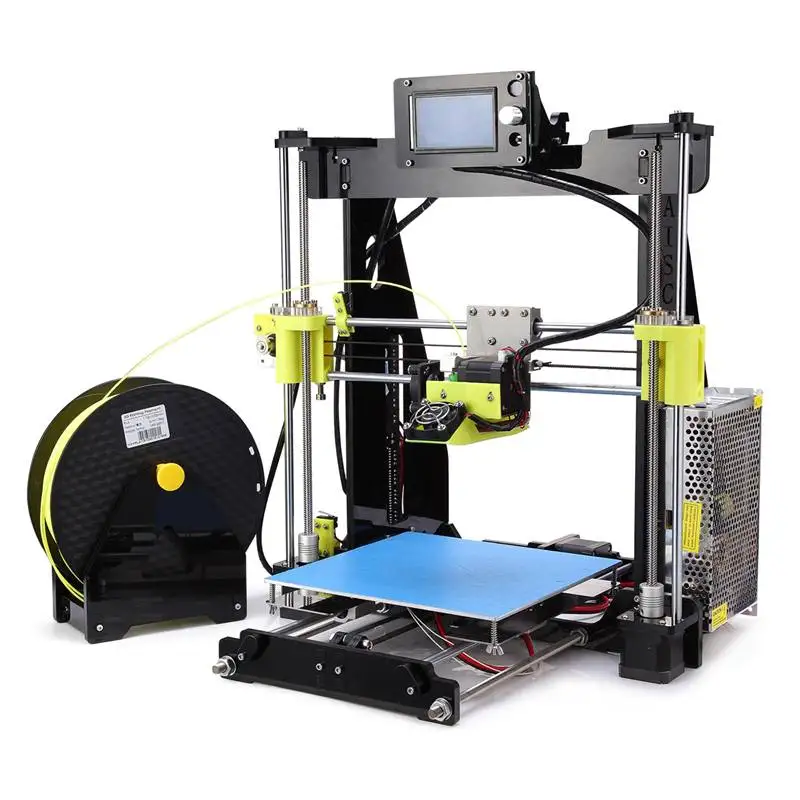 To name a few:
To name a few:
- Sciaky EBAM 300
- Titomic TKF1000
- ADC Aeroswift
- ADIRA AddCreator
- Fabrisonic SonicLayer 4000
- ExOne X1 160PRO
- InssTek MX-600
- BeAM Modulo 400
- Optomec Lens CS 600
- Additive Industries MetalFAB1
Metal 3D printers from China
There has recently been a lot of growth in the metal 3D printer market in Asia, and more specifically in China. Some Chinese brands have been upping their game in that respect, providing industrial-grade metal 3D printing options:
- Farsoon
- ZRapid Tech
- Shining 3D
- Wiiboox
However, we feel that they are not yet playing in the same league as the 3D printers from our main selection, mostly due to a lack of distribution networks, after-sales service and training, and other factors which tend to matter when considering them together as a whole.
R&D metal 3D printers for labs
In certain cases, metal 3D printers are used for research purposes to develop and test new materials. There are a few machines that are specifically designed for this:
There are a few machines that are specifically designed for this:
- Open Additive PANDA-6”
- Freemelt ONE
- Sharebot metalONE
Pros and cons of metal 3D additive manufacturing
Benefits of 3D printing metal parts
- On-demand production: Metal additive manufacturing offers more flexibility and control over the production line.
- Complex designs made possible: With 3D printing technology, it is possible to create highly detailed and intricate parts that would have to be broken down into several pieces with traditional methods.
- Waste reduction: Compared to CNC milling, for example, metal AM produces much less waste as it only consumes the material needed for a certain part. This is more true for extrusion-based methods than it is for powder-based methods, where it isn’t always possible to re-use 100% of unsintered or unbinded material.

- Lighter parts: Whereas metal parts are usually completely solid infill-wise with other methods, 3D printing allows parts to be more or less hollow without undermining their strength and resistance.
- Cost-effectiveness: All the above benefits of metal 3D printing can inherently reduce costs per part, although high metal 3D printer prices do represent a significant entry barrier. Reaching a positive return on investment can take a while depending on your throughput.
Limits of metal 3D printing
- Metal 3D printing prices: Metal AM systems are still quite expensive, as are metal powders and metal filaments. There are hidden costs, too (e.g. energy consumption, learning curve, etc.).
- Environmental constraints and safety precautions: Most metal 3D printers have a large footprint and require specific operating environments with controlled temperatures, hygrometry, and more.

- Post-processing: In many cases it is necessary for parts to be post-processed, whether it’s debinding and sintering or finishing touches for surface quality.
- Physical properties: It can be difficult to achieve the same physical properties that traditionally manufactured metal parts have. There are a number of factors (e.g. anisotropy) to take into account during the design process and file preparation before even trying to 3D print a certain part.
Metal 3D printing materials
Which metals can you 3D print?
A growing number of metals and metal alloys can be 3D printed. These are the main ones:
- Aluminum
- Titanium
- Nickel, Inconel
- Copper
- Bronze
- Cobalt, Cobalt-Chrome
- Steels (tooling, maraging, stainless)
- Precious metals (gold, silver, platinum)
Which metal 3D printing material formats are available?
Metal 3D printing material can be found in various formats, catering to different metal 3D printing methods.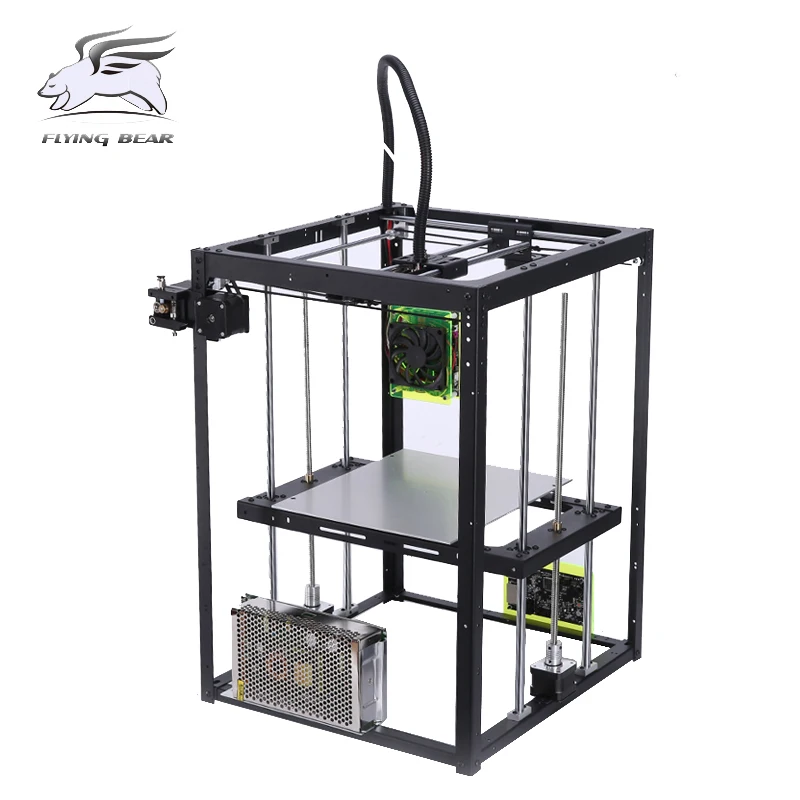 The most common are:
The most common are:
- Powder
- Wire
- Filament
It is also possible to find metal 3D printing resin as well as metal sheets for lamination-based 3D printers.
Metal 3D printer price: how much does a metal 3D printer cost?
Industrial metal 3D printer prices generally range from about $30,000 to over one million dollars for the most premium, industrial-grade metal additive manufacturing systems.
Additional costs to consider are the materials for metal 3D printing, which can cost a few hundred USD/kg, as well as costs linked to post-processing (tools, time, etc.).
Applications for metal AM systems
There are thousands of possibilities and use cases for metal 3D printing in a wide range of industries. A few industries have been incrementally using metal AM:
- Aerospace
- Automotive
- Medical
Whether it’s for tooling, replacement parts, or final products, many businesses can benefit from metal 3D printing.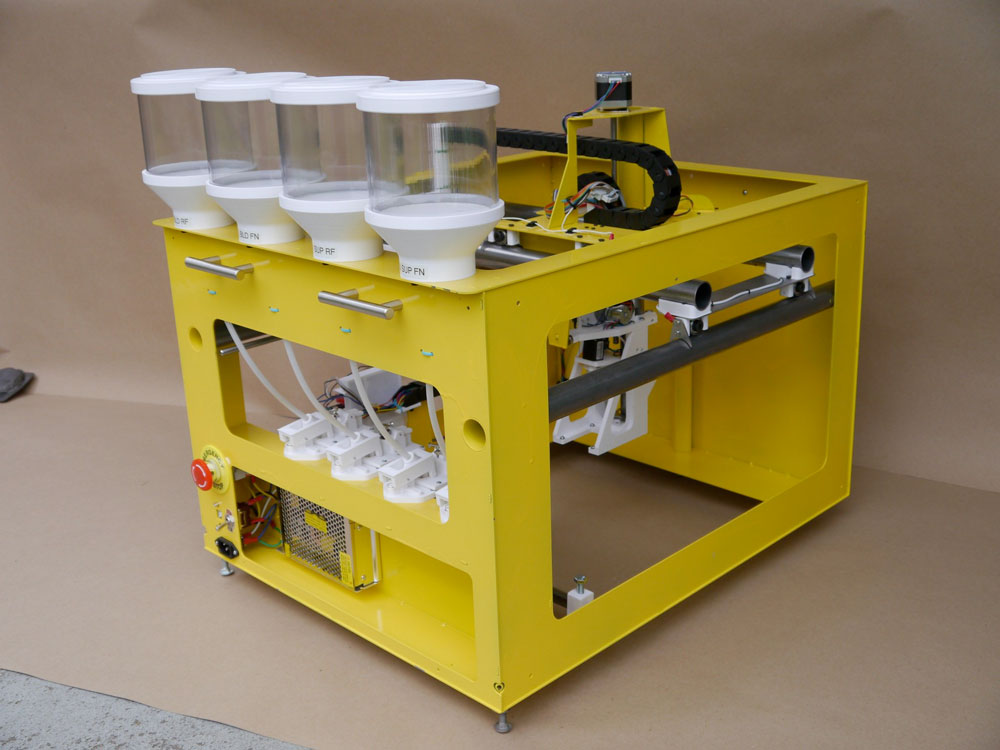
However, metal additive manufacturing isn’t necessarily beneficial for every single metal part. Although some metal 3D printing systems have a relative capacity for serial production, it is generally cheaper to keep using traditional methods for simple parts.
For cases where complex geometries, rapid prototyping, and mass customization are required, metal AM is convenient and efficient.
Metal 3D printing services: order 3D metal parts online
For professionals with limited office space and human resources, low budgets, and/or few needs of custom parts and prototypes, metal 3D printing services can be an ideal solution.
These additive manufacturing service companies own a variety of high-quality 3D printers with different technologies, and their professionals are experts in 3D printing. It is possible to order metal 3D parts on-demand, without acquiring a 3D printer or having to buy a certain material for one-time use.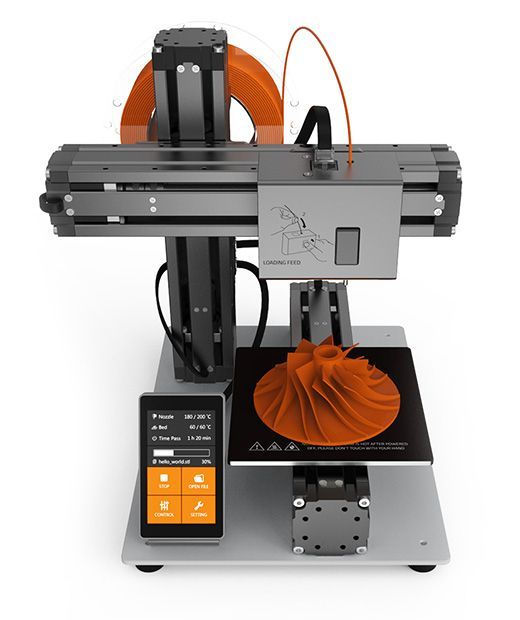
Here are some of the most trusted 3D printing service providers that offer metal printing services:
- Sculpteo
- Shapeways
- Hubs (ex 3D Hubs)
- Stratasys
- i.materialise
- Protolabs
Metal 3D printing technologies and acronyms
Many manufacturers develop proprietary variations of existing technologies and label them their own registered names:
- Powder Bed Fusion (PBF): DMLS (Direct Metal Laser Sintering), DMP (Direct Metal Printing), LaserCUSING, LBM (Laser Beam Melting), LMF (Laser Metal Fusion), SLS (Selective Laser Sintering), SLM (Selective Laser Melting)
- Directed Energy Deposition (DED): DMT (Direct Metal Tooling), EBAM (Electron Beam Additive Manufacturing), EBM (Electron Beam Melting), LENS (Laser Engineered Net Shaping), LMD (Laser Metal Deposition)
- Metal Material Jetting (MJ) or Binder Jetting (BJ): Magnet-o-Jet, Nanoparticle Jetting, SPJ (Single Pass Jetting), Metal Jet
- Metal filament extrusion/Fused Filament Fabrication (FFF): ADAM (Atomic Diffusion Additive Manufacturing), CEM (Composite Extrusion Modeling), FDM (Fused Deposition Modeling), FFD (Fused Feedstock Deposition), FMP (Filament Metal Printing), BMD (Bound Metal Deposition), MIM (Metal Injection Molding)
- Lamination: SL (Sheet Lamination), UAM (Ultrasonic Additive Manufacturing)
- Metal resin 3D printing: DLP (Digital Light Processing), FluidFM, SLA (Stereolithography)
Metal 3D printing FAQ
Is 3D printed metal strong?
Metal 3D printed parts can be as strong (or even stronger) as metal parts created with traditional manufacturing processes such as casting. The part’s strength will, however, depend on the metal AM method used and the conditions in which it is 3D printed.
The part’s strength will, however, depend on the metal AM method used and the conditions in which it is 3D printed.
When was 3D metal printing invented?
Metal 3D printing became possible in the 1990s with the development of Selective Laser Melting technology. However, 3D metal printing only started to gain traction and public interest from around 2010 onwards.
How does metal 3D printing work?
There are several ways to 3D print metal. Layers of metal filament can be deposited one after the other, producing a green part that must later go through debinding and sintering steps. It is also possible to fuse metal powder particles together with a laser, or with an inkjet printhead that deposits drops of binding material onto the powder.
2022 The Best Metal 3D Printers Buying Guide
ADVERTISEMENT
In industries such as jewelry, medical, dental, and manufacturing, metal 3D printing is one of the fastest-growing technologies, thanks to its ability to produce complex and unique structures with high precision.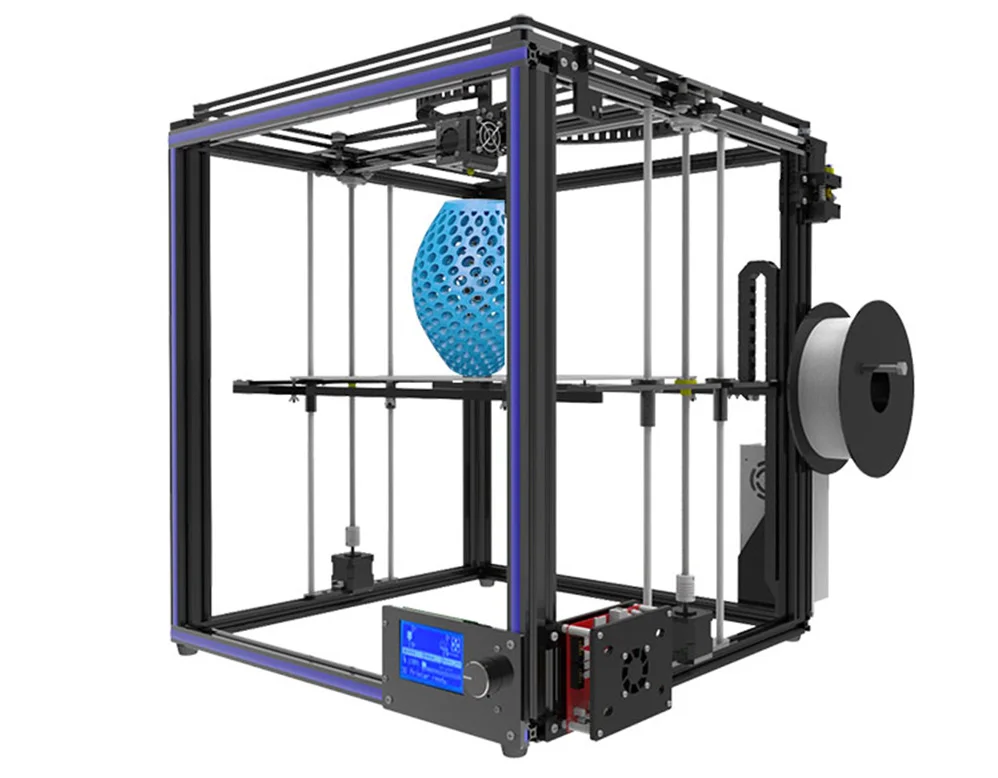 Using this technology, users can create cost-effective metal parts and prototypes.
Using this technology, users can create cost-effective metal parts and prototypes.
A lot of waste is usually produced during metal part production. A 3D printer, on the other hand, can reduce energy consumption and material wastage.
Nowadays, companies are focusing their efforts on producing machines that are faster, easy to use, and more powerful. There are many metal 3D printers on the market that have varying specifications which cater to different demands.
With all that in mind, if you are on the hunt to choose the right 3D metal printer that suits your business needs then this article will provide the insights you need to make the best decision. Check out below:
What Is Metal 3D Printing And How Does It Work?
A laser beam melts 20 to 60-micron layers of metal powder one on top of the other, allowing designers and artists to create complicated shapes and details that would not have been possible using traditional manufacturing methods.
After printing, the metal is post-processed by removing the support structure, washing, and heat-treating the part. Sometimes sanding needs to be done, depending on what surface finish the user requires.
Sometimes sanding needs to be done, depending on what surface finish the user requires.
ADVERTISEMENT
What Are The Benefits Of Metal 3D Printing?
When we talk about strength and flexibility, there is nothing quite like metal.
There are many advantages to metal 3D printing, one of which is that there are no design restrictions. From intricate to highly complex geometries, additive manufacturing achieves every design with greater precision and higher speeds.
One of the most widely known advantages of metal 3D printing is that cuts out overheads as well as bandwidth issues that you face with tooling which means that the manufacturer can produce low-volume parts quickly and affordably. Additionally, it eliminates manufacturing issues like inefficient workflows, third-party manufacturers, and complex purchasing processes.
Not to forget that Additive manufacturing is the best solution if you need to produce custom-made objects.
With so many benefits of having a metal 3D printer, manufacturers nowadays cannot resist the idea of investing in a metal 3D printer.
Comparison Chart
| Name | Link | Nomination | Overall Rating |
|---|---|---|---|
| Desktop Metal Studio | Most Innovative | 9.5 | |
| Concept Laser XLine 1000R | Extraordinarily Efficient | 9 | |
| Sciaky EBAM 300 | Impressive Pick | 9.8 | |
| Fabrisonic SonicLayer 4000 | Highly Reliable | 8.7 | |
| Renishaw RenAM 500Q | Most Consistent Performance | 8 | |
| Markforged Metal X | Safest option | 8.7 | |
| Velo3D Sapphire | Most Advanced | 8.5 | |
| Arcam EBM Spectra L | Incredibly Productive | 9 | |
| XJet Carmel 700M | Most Cost-effective | 8.9 | |
| Rapidia Metal | Extremely Office Friendly | 8 |
ADVERTISEMENT
List of Best Metal 3D Printers
Desktop Metal Studio
Undoubtedly, it has never been this easy to create high-performance as well as complex metal parts before the release of Desktop Metal Studio System .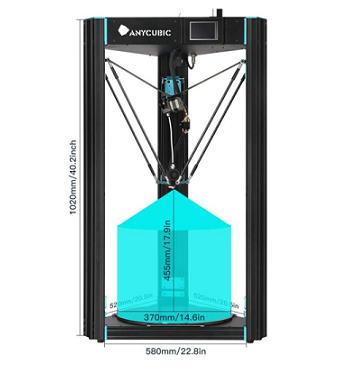 ..
..
Add to wishlistAdded to wishlistRemoved from wishlist 0
Add to compare
|
Launched by a US-based manufacturer, this 3D printer offers an impressive combination of speed and quality.
This 3D printer offers a 3-part system that includes a printer, debinter, and a furnace integrated with web-based software to ensure a seamless operation.
It also offers a layer height of 50 μm and a build area of 300x200x200mm (HWD) which is large and can accommodate huge designs without any trouble.
Although this machine is not cheap, it is much more affordable than the machines offering the same features at much higher prices.
Salient Features:
- This printer requires zero toolings and comes with a single jet passing technology that produces complex parts in minutes.
- Instead of a laser-based system, this 3D printer is quite similar to how a plastic FDM printer operates, as it extrudes bound metal rods while its Production system is inkjet and powder-based.
- This metal 3D printer can print as fast as 16 cm3/hour print speed allowing it to produce parts in the fastest possible time.

- This 3D metal printer comes with interesting features that include proprietary separable support technology and a software-controlled workflow which means that every stage of the process is fully automated which makes this machine a highly fascinating option.
- Offers a dynamic interface where the user can interact and view precise tool paths
PROS:
- Offers fast operation at a lower cost
- Ideal for mass production
CONS:
- Large footprint makes it difficult to move around and takes a lot of workspaces
Desktop Metal Studio System 2 3D Printer In-Depth Review
ADVERTISEMENT
Concept Laser XLine 1000R
Capable of replacing the costly sand casting and die casting applications, Concept Laser X1000 is the biggest 3D printer of its kind.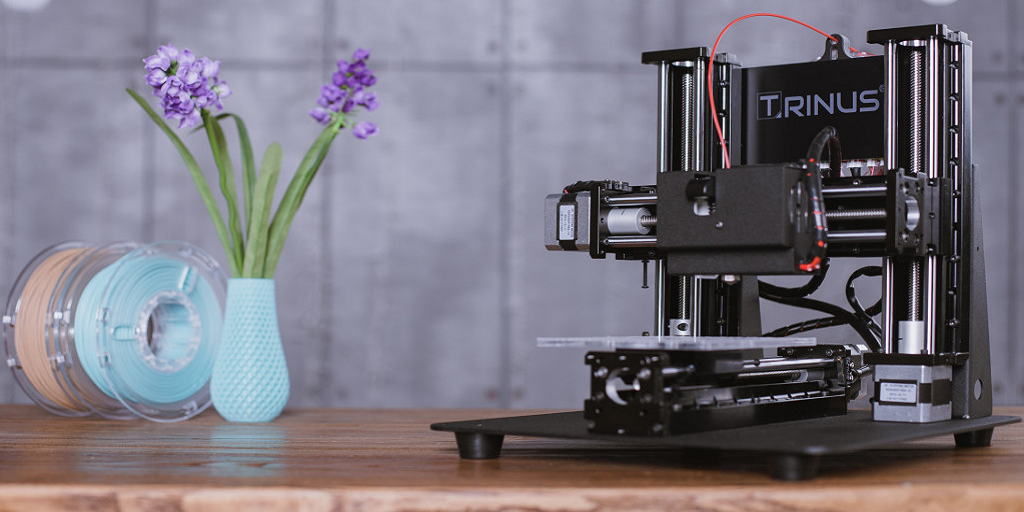 It has a ...
It has a ...
Add to wishlistAdded to wishlistRemoved from wishlist 0
Add to compare
|
With an immense build volume of 630 x 400 x 500 mm, you can depend on this impressive printer for creating complex geometries without any hassle while its high-power laser creates precise and durable metal parts.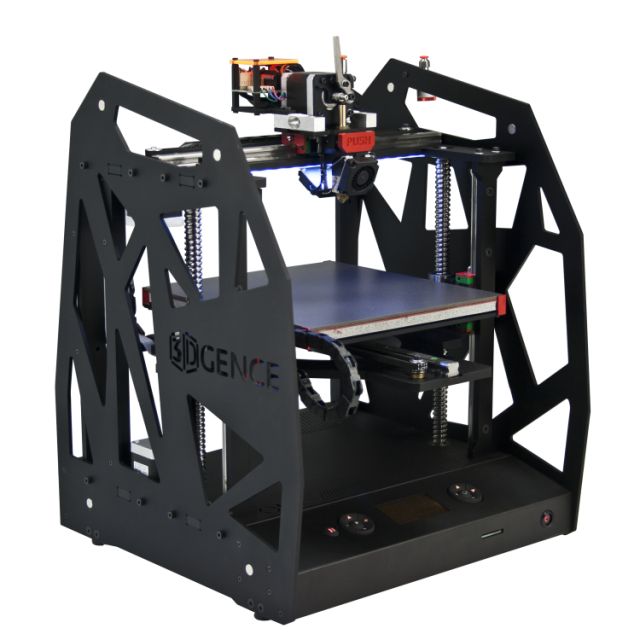
Simply put, this super-efficient machine comes with amazing specifications that lead to greater productivity and superb efficiency thus fitting most industrial needs.
This printer does not only offer a high printing speed, but it also comes with remarkable print quality.
Although we agree that this printer is not the most affordable, be assured that with all the exciting and unique features, this printer is worth a splurge.
Salient Features:
- Comes with a touch screen interface to provide easy access to the settings of the printer
- This versatile machine also allows you to work with a variety of metals like stainless steel, nickel-base alloy, and other precious metals such as gold or silver alloys
- Uses LaserCUSING process that makes it possible to construct lightweight structures with no design restrictions
- This printer offers a 1000-watt laser strength, which makes it possible to achieve construction rates of up to 65 cm³/h.
 What’s more fascinating is that this machine is highly capable of building parts that can weigh up to 1000 kg
What’s more fascinating is that this machine is highly capable of building parts that can weigh up to 1000 kg
PROS:
- Ideal for industrial use
- Offers fast production
- The huge print area allows users to create large metal structures with ease
CONS:
- The printer is bulky and takes a large space for storage thus making it unsuitable for personal use at home
Concept Laser XLine 1000R 3D Printer In-Depth Review
ADVERTISEMENT
Sciaky EBAM 300
Talk about the large format metal 3D printer, and Sciaky EBAM 300 would top the list with the capacity to print models 19 feet in length. Aiming at ...
Aiming at ...
Add to wishlistAdded to wishlistRemoved from wishlist 0
Add to compare
|
Rich in advanced features, Sciaky’s Electron Beam Additive Manufacturing (EBAM) 300 offers the best printing experience for manufacturing parts and functional prototypes.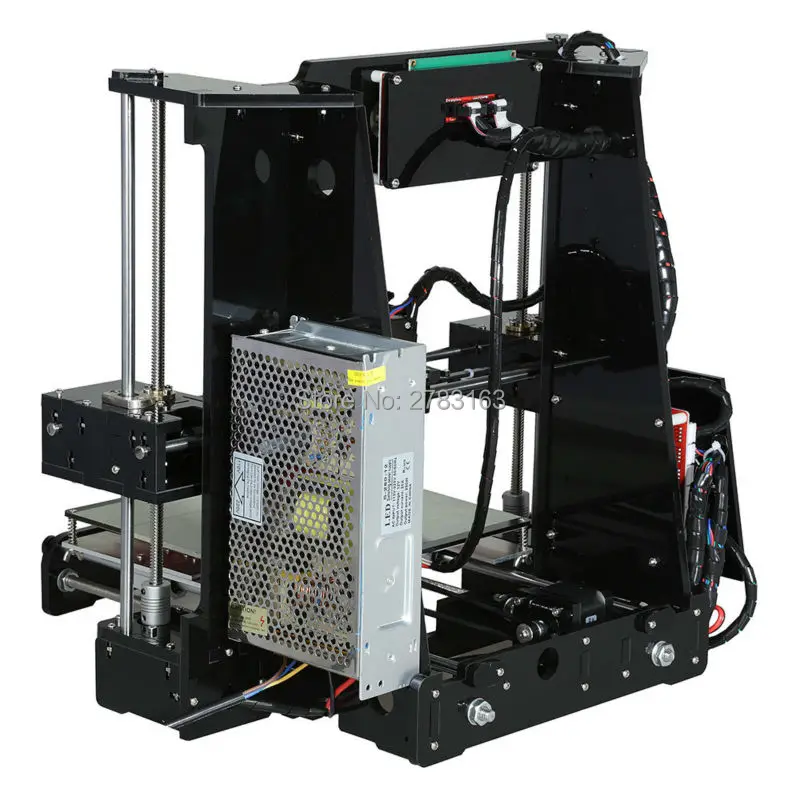 This unique technology melts a 3 mm thick titanium filament using a powerful electron beam.
This unique technology melts a 3 mm thick titanium filament using a powerful electron beam.
Another exciting thing about this printer is that it offers a build platform of 19′ x 4′ x 4′ x 8 which is the largest offered by any metal 3D printer in the market. Additionally, the company also claims that it is capable of producing a metal structure over ten feet long in just 48 hours.
This machine is a reliable option for both commercial and industrial use. It is also highly suitable for industries like aerospace, dentistry, medical, jewelry, and many others.
Even though the machine has a high printing cost, but with all the impressive features and quality work, the cost is justified.
Salient Features:
- Its innovative IRISS process control technology provides greater control over geometry and eliminates inaccuracies. It also prevents material wastage.
- The machine not only produces metal parts but can be used for customized repairs as well
- Fast deposition rate ranging from 7 to 20 lbs of metal per hour
PROS:
- Offers the largest build volume and the fastest speed thus making it ideal for producing high-quality metal parts
- It comes completely assembled
CONS:
- It’s expensive so small businesses might not be able to afford it
Sciaky EBAM 300 3D Printer In-Depth Review
ADVERTISEMENT
Fabrisonic SonicLayer 4000
The Metal additive manufacturing specialist Fabrisonichas come up with the incarnation of the sonic layer line of 3D printers. Fabrisonic Sonic Layer ...
Fabrisonic Sonic Layer ...
Add to wishlistAdded to wishlistRemoved from wishlist 2
Add to compare
|
Known for creating complex internal geometries and impossible designs, this huge machine is a great option for printing large components.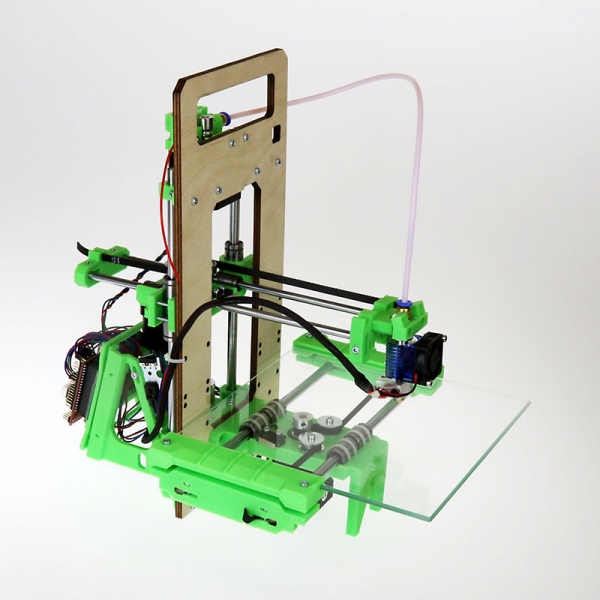
With a build space of 1016 × 610 × 610 mm, it features an Ultrasound Additive Manufacturing Technology that uses ultrasonic sounds to combine layers of metal foil.
Here the solid metal objects are built into a three-dimensional shape by using a series of metal tapes. Thanks to this innovative method, there is also no need for very high temperatures.
Considering its remarkable accuracy and smooth finish, the metal parts do not require post-processing so the overall print time is decreased which allows you to cater to an urgent production need.
Salient Features:
- It uses industry-standard G-code programming which allows the user to choose the CAD/CAM software as per their preferences
- Compatible with a wide array of metals and their alloys
- Comes with a table size of 44 inches * 24 inches
PROS:
- Speedy operation for mass production
- Capable of printing large components
CONS:
- Costly option
- Might not be great for printing fine organic structures
Fabrisonic SonicLayer 4000 3D Printer In-Depth Review
ADVERTISEMENT
Renishaw RenAM 500Q
RenAM 500Q is a powder bed 3D printing system by Renishaw. It’s a multi-laser AM system featuring four high-power 500 W lasers. Each of these laser ...
It’s a multi-laser AM system featuring four high-power 500 W lasers. Each of these laser ...
Add to wishlistAdded to wishlistRemoved from wishlist 0
Add to compare
|
If you are looking for a printer that consistently produces superb quality output, then this 3D printer is your best option.
Featuring a building envelope of 250 mm x 250 mm x 350 mm, this 3D printer uses four high-power 500 W lasers that move independently and can access the powder bed simultaneously.
Most importantly with its four lasers, the printer achieves build rates up to four times faster than single laser systems.
Salient Features:
- This printer is suitable to print titanium alloys, cobalt-chromium, stainless steel, and a range of other metal powders
- With deposition rates of up to 150 cm3/hour, this machine not only improves productivity by speeding up the process of printing but also lowers the cost per part
- It also offers an innovative dual Safe Change filter system that provides clean processing conditions throughout the duration of the build
- Another great feature is that it comes with an intelligent gas flow system that reduces argon consumption
- It also features a rich user interface that is operated through a touch screen with user-friendly controls
PROS:
- Practical and compact design
- Ensures creation of large parts without any hiccups
CONS:
- Not suitable for large scale parts
Renishaw RenAM 500Q 3D Printer In-Depth Review
ADVERTISEMENT
Markforged Metal X
The printer is the most accessible way for fabricating complex metal parts with the widest available range of advanced metals.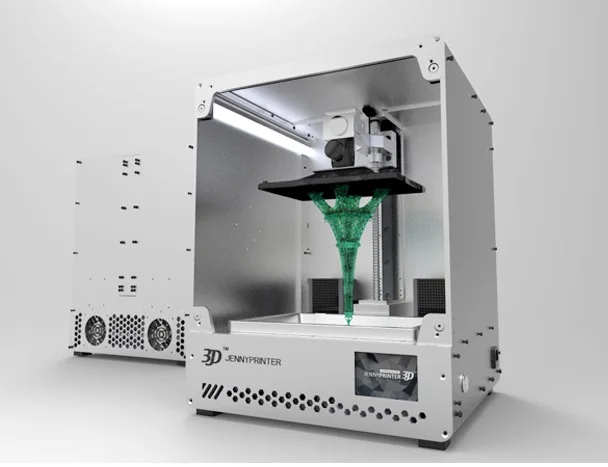 Starting from ...
Starting from ...
Add to wishlistAdded to wishlistRemoved from wishlist 0
Add to compare
|
Offering an impressive geometrical accuracy at an incredible speed, this metal 3D printer uses Atomic Diffusion Additive Manufacturing (ADAM), somewhat similar to FDM 3D printing as it uses a bound metal powder rod embedded inside a plastic filament.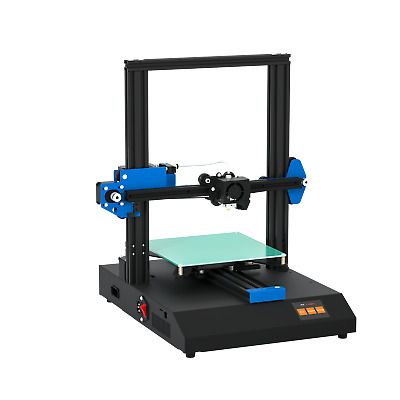
One of the main benefits of this technology is that it allows the user to create fully enclosed structures.
This machine features a 50-micron layer height, which is quite convenient while also offering a generous build volume of 300 x 220 x 180 mm that gives users the freedom to use it to print large components.
Other than being easy to use, this machine also happens to be one of the most affordable options in this roundup.
Salient Features:
- This printer comes with Markforged proprietary cloud-based software known as Eiger that allows for real-time fleet management so that you can handle production more efficiently
- The software is also compatible with most browsers that allows you to seamlessly import CAD drawings and printed metal 3D parts
- It can print parts from a variety of metal alloy filaments, including tool steel, Inconel, and others
- Features a two-part post-printing process that saves the user a lot of his time
- functions without using powder management systems that ultimately expedite the print speed
PROS:
- Allows designers to manufacture parts in just 48 hours
- Boats a compact footprint
- Also comes with a replaceable print sheet
CONS:
- Requires a high power usage
Markforged Metal X 3D Printer In-Depth Review
ADVERTISEMENT
Velo3D Sapphire
A highly reliable solution for large format metal printing, The Velo3D Sapphire is designed by Velo3D, a 3D printer manufacturer from the USA Velo3D. ...
...
Add to wishlistAdded to wishlistRemoved from wishlist 0
Add to compare
|
If you are a designer who is hoping to minimize support structures, then look no further. The Velo 3D Sapphire allows geometries that are otherwise impossible to print due to hard-to-remove support structures.
The Velo 3D Sapphire allows geometries that are otherwise impossible to print due to hard-to-remove support structures.
Keeping its remarkable attributes in mind, this machine has targeted applications in aerospace, energy, industry, and medical implants and devices.
Salient Features:
- This printer is equipped with dual 1kW lasers while its build volume is 315 x 315 x 1000
- It features an Intelligent Fusion and a proprietary 3D printing technology that makes it possible to produce parts with complex geometry that require little or no post-processing
- Another point to note is that this printer is driven by a powerful software known as a flow that pre-print simulation and correction while also optimizing the design and adjusting the geometry and build layout thus ensuring predictable print outcomes every time
- What makes this machine unique is its ability to print low angles.
 Not just that it can also produce overhangs below five degrees, as well as large inner diameters and tubes up to 40mm that too without requiring any supports
Not just that it can also produce overhangs below five degrees, as well as large inner diameters and tubes up to 40mm that too without requiring any supports
PROS:
- Ensures support free prints
- Saves time on post-processing prints
CONS:
- Might not be beginner-friendly
Velo3D Sapphire 3D Printer In-Depth Review
ADVERTISEMENT
Arcam EBM Spectra L
A metal 3D printer designed for industrial applications can support part printing for a variety of niches. Arcam EBM Spectra L is best suited for ...
Add to wishlistAdded to wishlistRemoved from wishlist 0
Add to compare
|
This machine has been designed to reduce cost per part by 10% while also increasing the overall productivity.
With several interesting upgrades, this 3D printer uses an electron beam melting technology that requires no supports to save time and costs. It also offers a superior print quality as compared to other EBM machines.
Salient Features:
- The build volume is 350 x 430 mm
- Another noteworthy feature is that it comes with a 4.5 kW beam power that increases build speed by 20% which makes it quite an incredible machine
- The improved auto beam calibration makes it ideal for delicate and bulky geometries
- Advanced data analytics are also incorporated into the unit that helps the user with informed decision-making and future design and development.
- The unit is also compatible with the Arcam EBM PRS 30
- You can use this printer for printing out Titanium and Copper efficiently
PROS:
- More consistent and accurate beam
- Offers a large build volume with faster speed
- Simple process makes it user friendly
CONS:
- Requires post-processing
GE Additive Arcam EBM Spectra L 3D Printer In-Depth Review
ADVERTISEMENT
XJet Carmel 700M
If you are looking for a metal 3D printer for industrial use, here is the Carmel 1400M, offering high-quality metal parts to the users. Designed by ...
Designed by ...
Add to wishlistAdded to wishlistRemoved from wishlist 0
Add to compare
|
With the ability to deliver unlimited design flexibility, unrivaled geometrical designs, and exceptional operational simplicity, this metal 3D printer uses patented NanoParticle Jetting that produces parts with precise accuracy in a highly efficient manner.
Other than being compatible with ceramics and metal materials, this technology is said to be 5 times faster than other processes.
Salient Features:
- This metal 3D printer features a build volume of 500 x 280 mm which allows the manufacturer to print dozen of metal parts simultaneously
- Features a large and highly responsive touch screen interface with user-friendly controls, which makes it easy to control and operate while printing. It also displays the production status for user convenience
- This 3D printer comes with Autodesk Netfabb Standard software tools that help you to streamline additive workflow efficiently
PROS:
- No support structures are required
- High resolution and density
- Safe and simple process
- There will be no waste as it only uses a precise amount of material
CONS:
- It’s a new and costly technology
XJet Carmel 1400 M 3D Printer In-Depth Review
ADVERTISEMENT
Rapidia Metal
Rapidia is a relatively new competitor in the market but with the revolutionized capabilities and unique technology that this machine offers, it is safe to say that this machine has come to stay.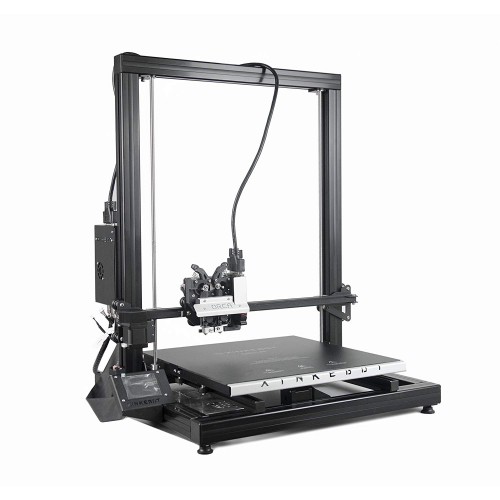
This printer works with a water-based paste for feedstock, which eliminates the need for traditional debinding. The water evaporates while printing so the part only has to go through the furnace so that it solidifies and attains its final form.
Last year, they also launched a new rapid cooling furnace that can complete a whole sintering cycle in about 20 hours. The best part? It does not require any vent installation.
Salient Features:
- The printer comes with pre-installed software and sintering settings which makes it extremely beginner-friendly so you do not have to worry if you do not possess any technical knowledge
- Compatible with a variety of metals and ceramics
- The build volume of this industrial 3D printer is 200 x 280 x 200 mm and has a speed of over 40 ccs (2.4 cubic inches) per hour
- The printer uses two independent extrusion heads that you can equip with either a 0.
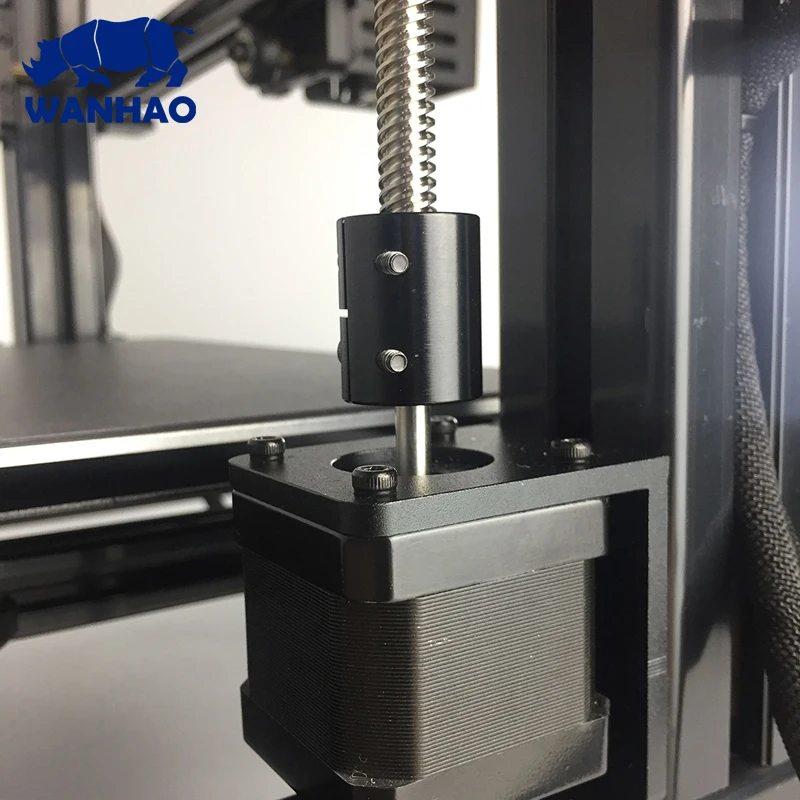 4 mm or 0.6 mm diameter nozzle
4 mm or 0.6 mm diameter nozzle
PROS:
- In terms of size, it takes little storage space
- Simple in operation
CONS:
- Not well known in the market
ADVERTISEMENT
Buyer’s Guide
Some of the most basic questions that you would want to ask yourself before buying a 3D printer involves the following:
- What metal(s) or composites do I want to print?
- What mechanical properties do my final prints need?
- Are speed and volume important to my business?
Before investing in a 3D metal printer, it is important to keep certain important factors in mind so you can choose the right model. Here is what you need to consider.
- Printing Technology: This is the most basic factor that you need to consider. However, deciding which 3D printing technology to use might be difficult, but it is the most important step to assure that your 3D printed object meets your expectations.
 Ask yourself: what properties your finished product needs to have? Listing those will help you figure out which technology will suit your production requirement more effectively and then choose a printer accordingly.
Ask yourself: what properties your finished product needs to have? Listing those will help you figure out which technology will suit your production requirement more effectively and then choose a printer accordingly. - Accuracy and Print Quality: Carefully go through the machine specifications and make sure that it has all the attributes to guarantee impressive precision and unrivaled quality
- Ease of Use: Your machine must feature advanced software that should allow you to print your parts with ease while making sure that the quality is not sacrificed. Moreover, it should also offer a user-friendly interface that guides the user through every step.
- Size: Metal 3D printers come in various shapes and sizes. Carefully go through the machine specifications and make sure that you have the space required to keep the machine in your office
- Material Compatibility: This is also an important factor to consider when buying a 3D printer.
 If your 3D printed output is to be used for a specific application then the part has to be printed using the most appropriate technology. The material must possess the required properties to perform to meet the designed specifications. Therefore, choosing the technology that offers printing in materials similar to your application is a necessity.
If your 3D printed output is to be used for a specific application then the part has to be printed using the most appropriate technology. The material must possess the required properties to perform to meet the designed specifications. Therefore, choosing the technology that offers printing in materials similar to your application is a necessity. - Speed and Volume: If speed is an important element for you then it is wise to look for a printer that delivers such a smooth finish so that it will not require any post-processing. In addition, if you are looking to print multiple metal parts simultaneously choose a printer with a large build volume.
Other than that, keep in mind, that certain materials emit toxic fumes that can be harmful if inhaled. To avoid this, buy a printer with an enclosure or a system for ventilation so that it releases the fumes or gases outside.
ADVERTISEMENT
Frequently Asked Questions (FAQS)
What Metals Can Be Used In 3D Printing?
Common metals like titanium, stainless steel, aluminum, copper bronze, and other precious metals like gold, silver, and platinum are printed directly by binding metal dust, which ultimately achieves a solid form.
Where Metal 3D Printing Is Used?
Metal 3D printing creates tool components and finished parts in sectors such as aerospace, and automotive. It also has a wide application in the medical sector as well as the dental industry.
Simply put, nearly every industry that uses metal parts has benefited from the time, money, labor, and material savings that metal 3D printing offers.
Are Metal 3D Printers Too Expensive?
Although there are certain metal AM systems that can only be afforded by large enterprises because of their high costs. But other companies like Markforged and Desktop Metal equipped their systems with more cost-effective components thus making it more affordable for small businesses.
What Are Some Of The Metal Printing Technologies Used Today?
Metal 3D printing is developing fast, and new technologies are being introduced with each passing day.
It includes different technologies that you will have to choose from depending on the project that you are working on.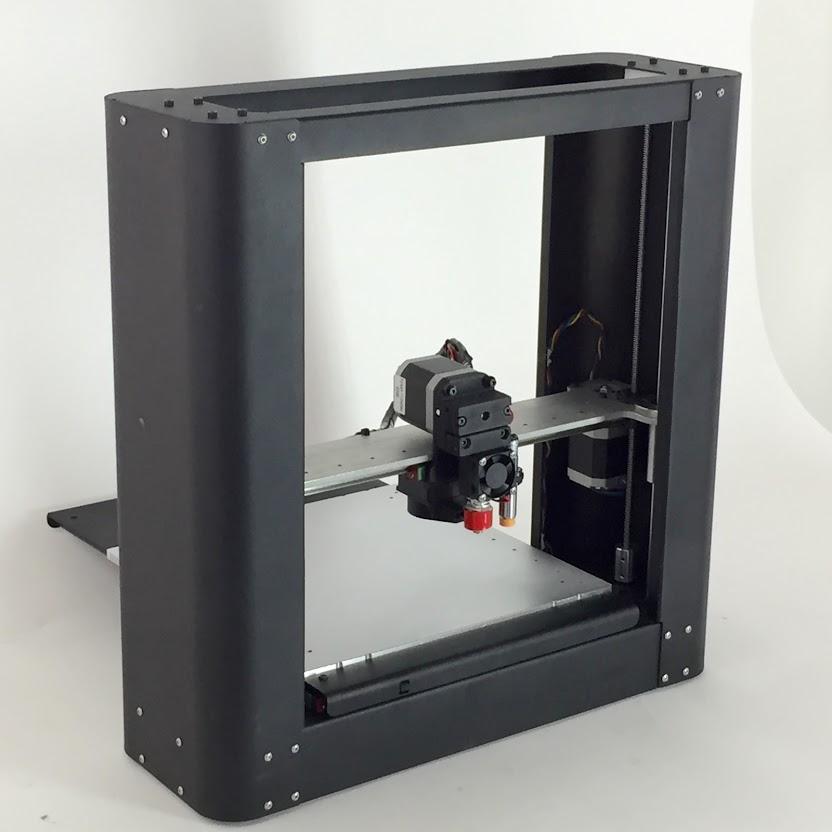 Some of these techniques are listed below:
Some of these techniques are listed below:
- Direct Metal Laser Sintering
- Selective Laser Melting
- Fused Deposition Modeling
- Binder Jetting
- Low wax casting
- Bound Powder Extrusion
SLM and DMLS are the most dominant metal 3D printing processes today and are particularly suitable for high-end applications.
Are Metal 3D Printed Parts As Strong As Traditionally Manufactured Metal Components?
A lot depends upon the environment and the type of technology you are using to 3D print your metal parts. But in general, the printed parts are as strong as the ones produced through conventional methods.
Conclusion
In recent years, Metal 3D printing has been one of the most outstanding developments in the AM industry. As technology has developed, it has proved to be much better than traditional methods.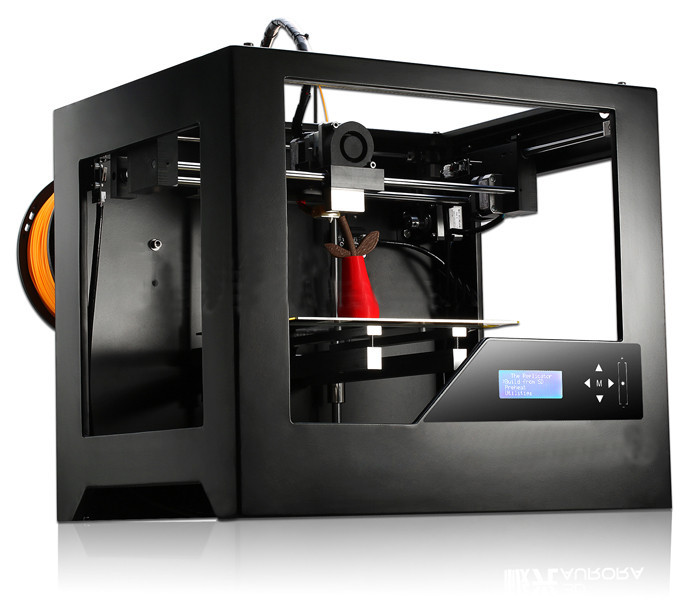
Although 3D metal printing is an expensive option, we cannot deny the fact that this method can certainly add much value to the manufacturing process by opening up new opportunities for manufacturing parts that were previously uneconomical or design prohibitive.
Anycubic Vyper 3D Printer Review • Best* First Printer
Anycubic's new device promises to be the perfect first printer for beginner makers. Is it so? Find out in this article!
The Anycubic Vyper is a simple and cost effective FDM 3D printer. Today we will take a closer look at this device from Anycubic and figure out who it suits best and what you should pay attention to.
Contents:
- First look
- Assembly
- Features and design
- Equipment
- First seal
- Video Review
- Summary
First Look
3D printing has been around for many years, but despite this, it still seems like a kind of “hobby for the elite”. But, there are 3D printers that are suitable for the most beginner makers. The Anycubic Vyper is just one of those printers.
But, there are 3D printers that are suitable for the most beginner makers. The Anycubic Vyper is just one of those printers.
Anycubic's new Vyper printer is a new generation 3D printer. It has many features needed to provide a comfortable and easy operation, features that are sorely lacking in other 3D printers.
Example: automatic platform leveling at the touch of a button. A great feature that will save you the frustration of manually sizing, which can be a huge hassle if you're new to 3D printing. It is worth mentioning that in the first versions of this printer there was a problem with tensor sensors. But Anycubic, after feedback from customers, solved this problem. However, if you still have a problem with auto alignment, you can contact LIDER-3D customer service.
Vyper also has a touch screen. Most budget 3D printers don't have it. They are equipped with round switches and often, navigation using such switches is quite a laborious process. The touch screen is certainly easier and more enjoyable on all fronts.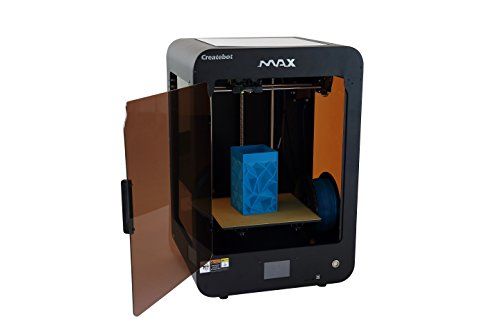 The interface is simple and not overloaded.
The interface is simple and not overloaded.
The options are sensibly grouped, which means quick access to the settings you need most often, such as changing media or adjusting desktop and hotend temperatures.
The Anycubic Vyper electronics includes a 32-bit motherboard and ARM Cortex-M3 chip, as well as silent TMC2209 stepper motor drivers. All this ensures fast, accurate and quiet operation of the printer.
The icing on the cake can be considered the possibility of an independent upgrade of this device. There are already various guides on the Internet to improve the printer.
But before we get into the details, the Vyper is the perfect “first” 3D printer. It prints reliably, is very quiet and not too expensive.
Build
The Anycubic Vyper is a DIY printer, but DIY is too strong a word for it. The fact is that the assembly of the device is the simplest, it is very far in complexity from other common DIY kits, which take several hours to assemble. You just need to tighten seven bolts and connect seven wires. All this will take no more than 15 minutes.
You just need to tighten seven bolts and connect seven wires. All this will take no more than 15 minutes.
The assembly manual is located on an SD card in one of the plastic bags: you need to insert it (or the included USB reader) into your computer and open the instruction PDF file.
This file explains step by step how to get started, which basically involves screwing the vertical part of the frame to the base, then attaching the touch screen with three more screws. The tools come in a small tray that sits at the base of the printer, and after a total of seven bolts and screws, plus five cable connections, you're ready to go.
An owl test pattern is already on the SD card, so you can start printing immediately after the platform is automatically calibrated. Just note that the SD card must be inserted into the slot on the front of the printer upside down, with the label facing the floor.
Design and design
- Printing platform: 245x245x260 mm
- 4.
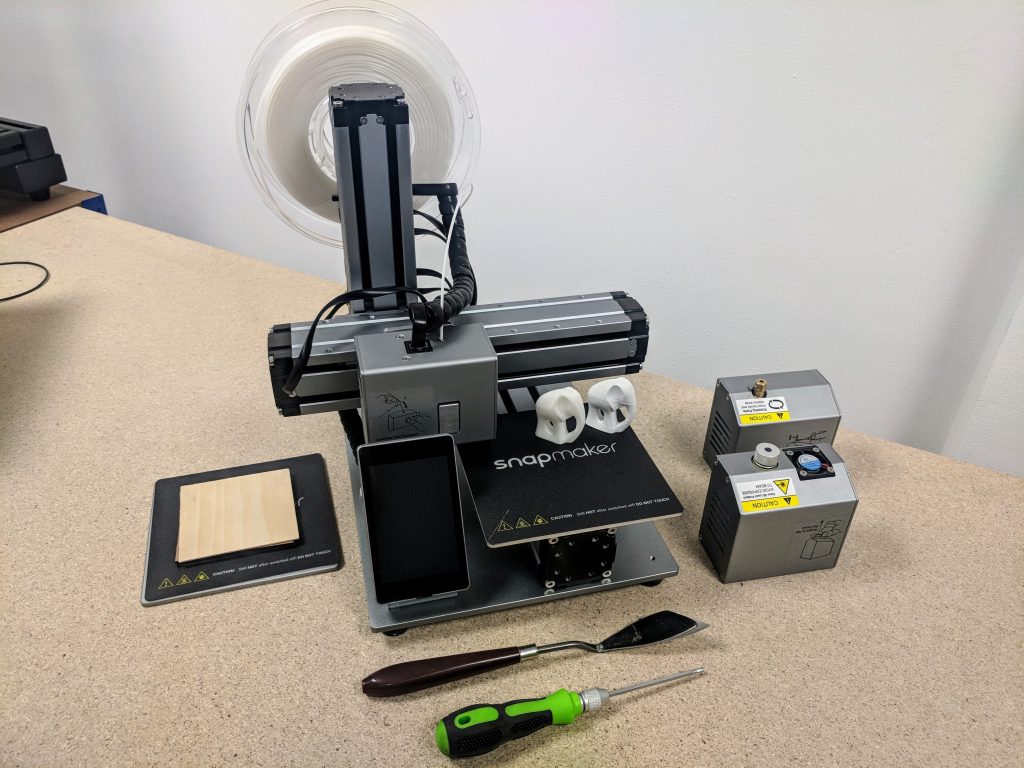 3-inch touch screen
3-inch touch screen - Double screws of the Z
- PRODUCAL PRODUMED
Vyper is very similar SE and undoubtedly this popular model was the inspiration for Vyper.
But that's not bad, Vyper is not a clone. Although it has quite a few similar features, such as dual z-axis screws. This means there are two screw rods, one on each side of the vertical frame, rather than just one on one side like many budget 3D printers have.
Two rods are better, as this means that the horizontal bar that holds the print head can be kept perfectly level as it moves up during printing, and helps avoid errors when printing very tall models.
Another nice addition is the dual z-axis sensors that help compensate for height changes, which also ensures that the first layer prints correctly.
The platform itself is heated, which is to be expected at this price. The heated platform helps the models stick better, but the Vyper kit includes a special flexible backing that further increases adhesion and makes life easier for the user. It is a sheet of springy steel that is held in place by a magnet. When the print is finished, you simply remove the sheet and fold it: the model simply peels off.
It is a sheet of springy steel that is held in place by a magnet. When the print is finished, you simply remove the sheet and fold it: the model simply peels off.
The substrate has a textured surface, which contributes to the adhesion of the first layer, and a special deposition on the magnetic substrates ensures their durability.
There are a few other nice touches, such as the extruder mechanism, which uses two gears to move the filament instead of the usual one. Next to it is a filament sensor that will stop printing and allow you to feed a new spool of filament, avoiding a lot of problems.
The hot end itself is an all-metal V6 E3DV-6 VULKANO with a diameter of 0.4 mm. This allows Vyper to print faster without losing accuracy or compromising the strength of the printed model.
There are three fans around it, and the whole assembly is covered with a plastic case, which makes it look nice and neat.
A selection of articles from the "Knowledge Base" section from the LIDER-3D website: 1) What is HIPS and how to print it • 2) Post-processing of models after 3D printing • 3) PLA plastic: what is it and how to print PLA
Contents
The tool tray contains thread cutters, hex keys, wrenches and nozzle cleaner.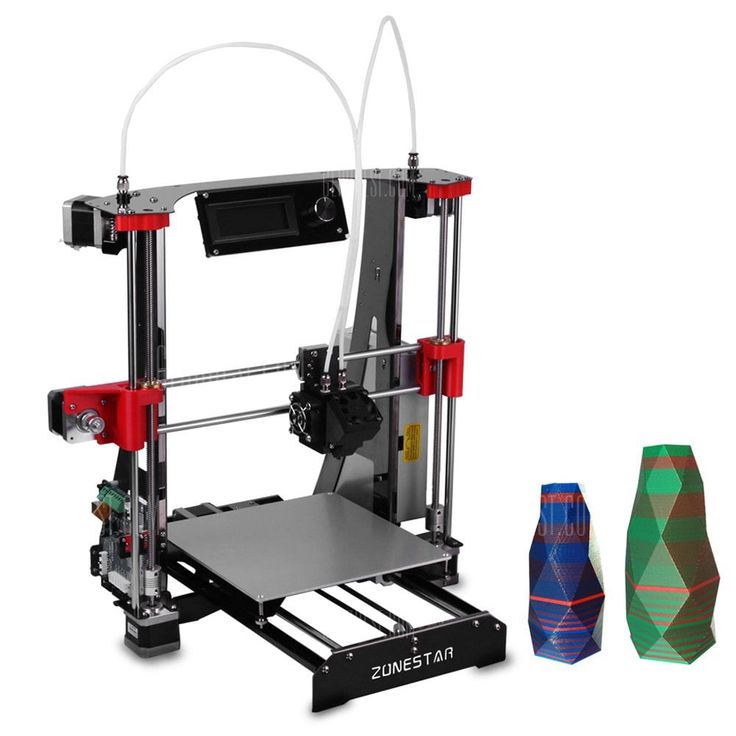 The kit also includes two spare nozzles.
The kit also includes two spare nozzles.
The Ultimaker Cura version is supplied on an SD card with the Vyper profile. Cura is almost universal slicing software.
First print
After leveling the platform, you can print a test model, a small owl figurine, which is included as a .gcode file on the SD card. This does not require a lot of filament and allows you to check that everything is working correctly.
We printed several models, specifically for the jaw model, the following settings were used: table temperature 60°C, nozzle temperature 225°C, print speed 100 mm/s, infill density 20%, material LIDER-3D Premium PLA white. The result is impressively clean. Aside from a few minor issues, this is one of the best results we've seen in a budget printer.
Vyper's touch screen allows you to adjust print speed and temperature on the fly, including while printing, which can be helpful if you notice something is wrong in the middle of printing. Information and settings are kept to a minimum, which is quite suitable for beginners, but may seem a little limited for experienced users.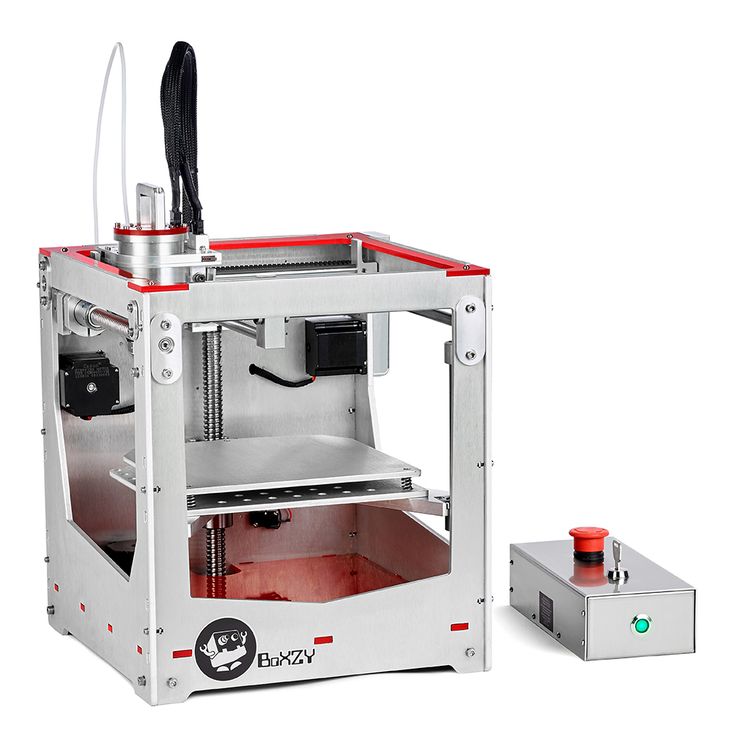
The auto-resume feature works as advertised, but requires placing the model near the back of the bed and printing from an SD card to use it.
The material of the next model LIDER-3D Premium PLA is blue. Printing parameters: table temperature 60°C, nozzle temperature 225°C, print speed 100 mm/s, infill density 20%.
Prints generally adhere well to the flexible bed and are easy to remove after printing.
The material of the next model LIDER-3D Premium PLA is brown. Printing parameters: table temperature 60°C, nozzle temperature 225°C, print speed 100 mm/s, infill density 20%.
The real plus is that the Vyper doesn't make too much noise when printing. The only thing you will hear is the cooling fans that cool the filament right after it is extruded.
This is important for long hours of printing, such as when you'll be typing all night long. People are usually asleep at night, and the noise from the Vyper is unlikely to keep you awake.
Video review
Bottom line
If you're looking for a budget 3D printer and are willing to pay a little more than the cheapest, then the Vyper is very much worth the money. The automatic platform calibration, great touch screen and solid build quality make it a great choice and an ideal first 3D printer, and for true hardcore pros, feel free to add it to their surely extensive collection of devices as a great entry-level 3D printer.
Thank you all, the material was prepared by a team of LIDER-3D specialists, we will be glad to hear your questions in the comments.
If you are interested in the Anycubic Vyper 3D printer, you can place an order on our LIDER-3D website, with free shipping throughout Russia and a guarantee.
Follow us on social networks: VKontakte, Telegram, Instagram, YouTube, Ya.Zen, Twitter, Facebook to be the first to receive the most interesting materials!
* - according to LIDER-3D
Review of Anycubic Photon Mono X 3D printer.
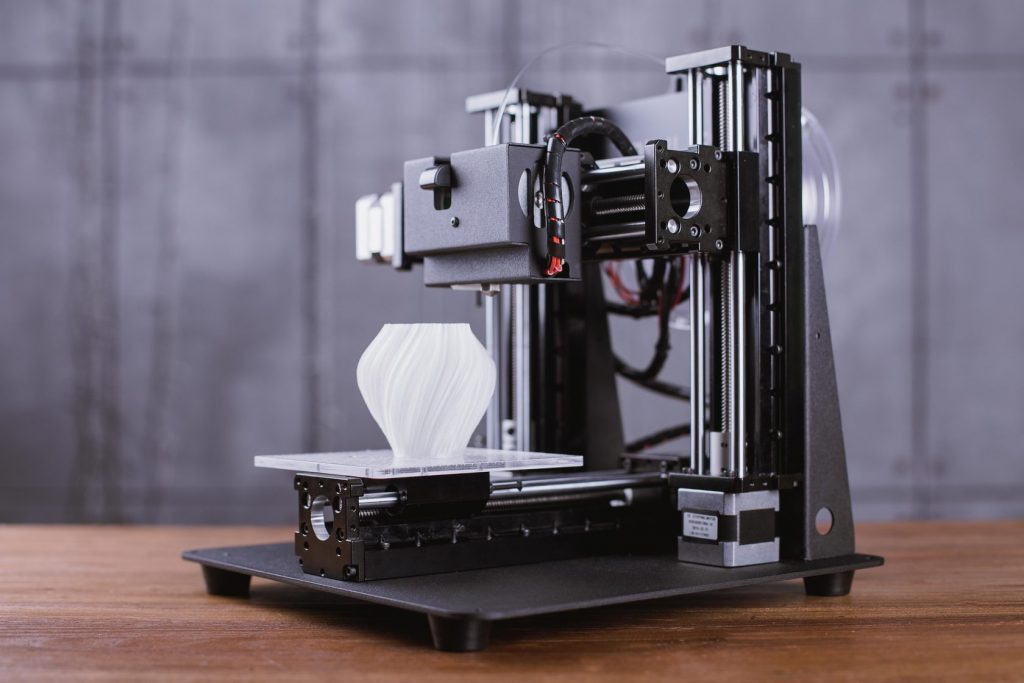 Photopolymer printer
Photopolymer printer When buying a 3D printer DISCOUNT on plastic and polymers up to 10%
Review of Anycubic Photon Mono X 3D printer
10/14/2021 Max Gusev
3D printer Mononcubic Photoncubic X
We are glad to present to your attention an interesting novelty in the field of 3D printing - Photon Mono X from the well-known and widely respected manufacturer Anycubic. One glance at the model evokes a mood for a serious working mood, but this 3D printer deserves a more detailed consideration, as well as an acquaintance with the functionality.
Exterior of the printer
Even a first glance at the Photon Mono X is enough to recognize the creation of Anycubic in the machine. And it's not the logo, although it catches the eye. The first thing you notice is the branded design and the large yellow protective cap, which will leave no doubt that Anycubic is in front of you.
The model has a black all-metal housing at the bottom. Management is carried out through a 3. 5-inch screen. There are two heatsinks and a USB port on the back and side of the Photon Mono X.
5-inch screen. There are two heatsinks and a USB port on the back and side of the Photon Mono X.
The 3D printer radiates stateliness and minimalism, as there are no protruding elements - a solid monolith of form and style. In terms of appearance, Photon Mono X is definitely on trend!
Printer Specifications
Photon Mono X's key features will be high quality and equally fast print speeds. This device has the highest print speed in its lineup.
Photon Mono X comes with an 8-inch 4K display. The UV light is projected in such a way that uniform curing of the resin is guaranteed. This is a proprietary proprietary technology that delivers high quality prints. The monochrome screen provides full curing of the layer in just 2 seconds. For comparison, in other models, this figure is 6 seconds.
The protective cover is highly durable and blocks out up to 99% of harmful UV radiation. The Photon Mono X is also equipped with a lid close sensor, meaning the machine will not print until you close the lid.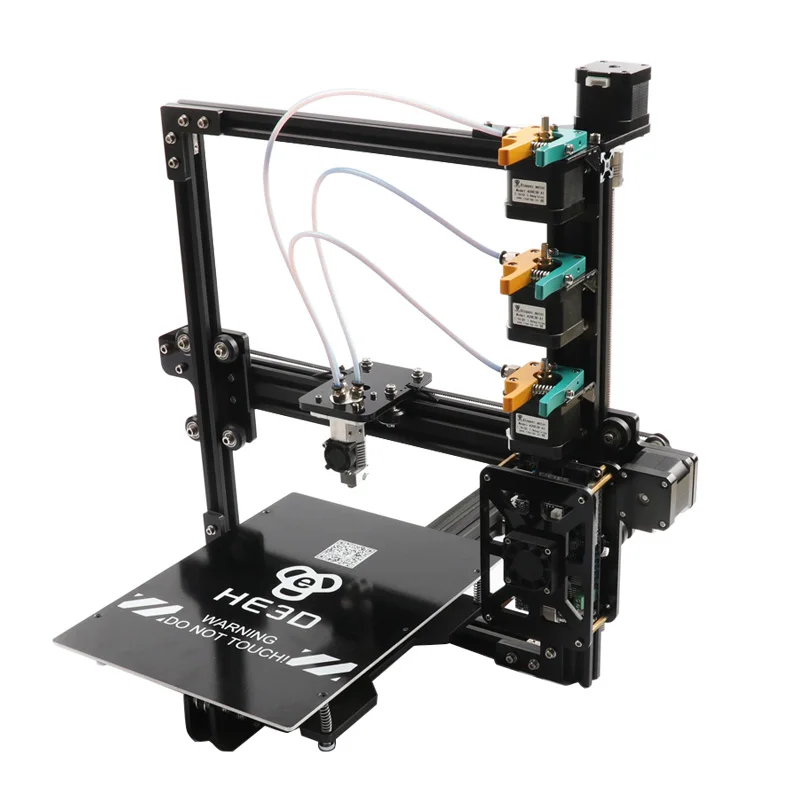 And even if you need to open the cover during printing, the printing process will immediately pause and continue only after closing it.
And even if you need to open the cover during printing, the printing process will immediately pause and continue only after closing it.
The Z axis of the Photon Mono X features a special design with dual rails. This guarantees stability during printing even at high speeds.
The print area of this model of 3D printer is very significant - 19.2x12x25cm.
Like most modern 3D printers, Photon Mono X has a USB port, but in addition there is also a WiFi module that allows you to control the device remotely.
Printer kit
Photon Mono X kit includes:
- aluminum spatula for removing models – 1 pc;
- network cable;
- WiFi module;
- plastic spatula for cleaning the container from resin;
- USB stick;
- external power supply;
- protective masks;
- resin filter;
- resin container;
- print bed;
- gloves;
- screws for fixing the container - 2 sets;
- hex;
- after-sales service cards.
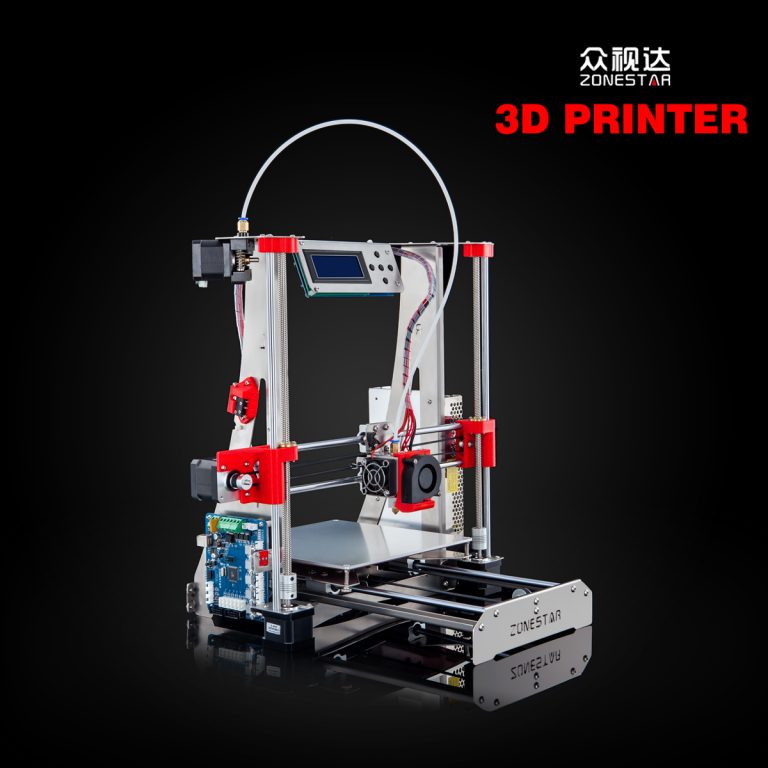
Learn more


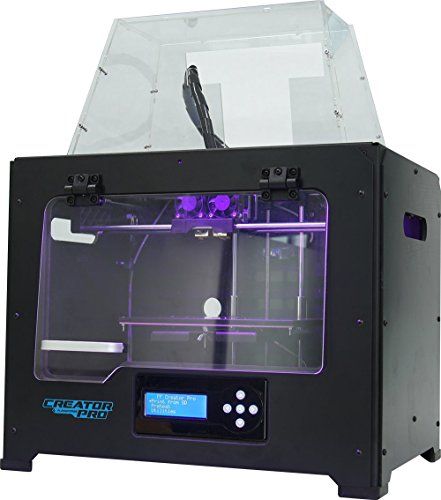 81 × 7.87 × 7.87 in
81 × 7.87 × 7.87 in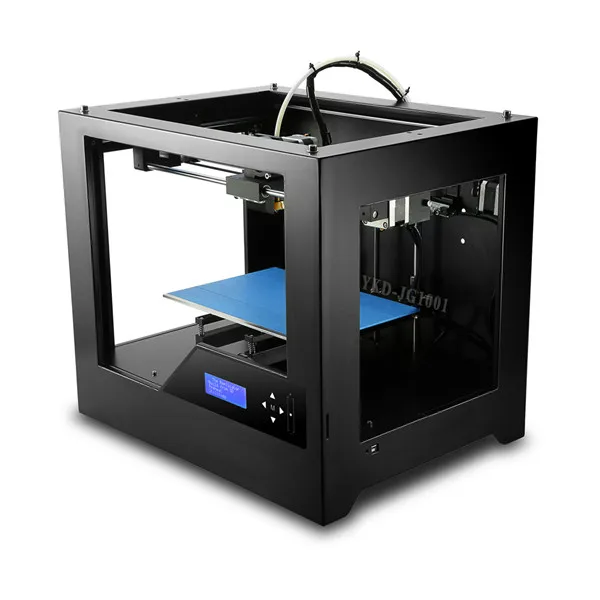 build size
build size-kupit-v-soin-store.ru-4.png) build size
build size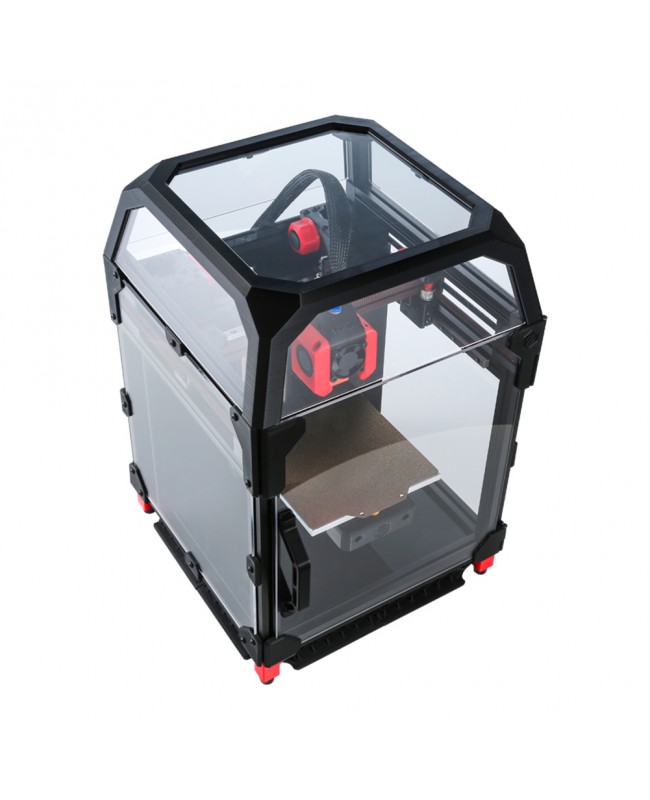 build size
build size build size
build size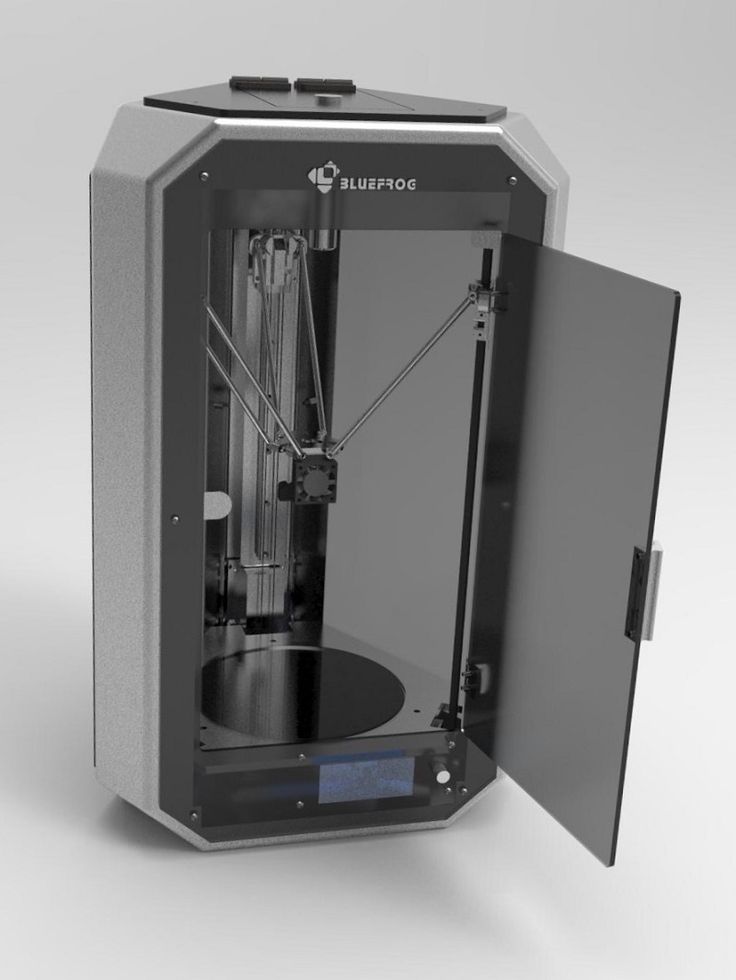 4 × 12.4 × 15.75 in
4 × 12.4 × 15.75 in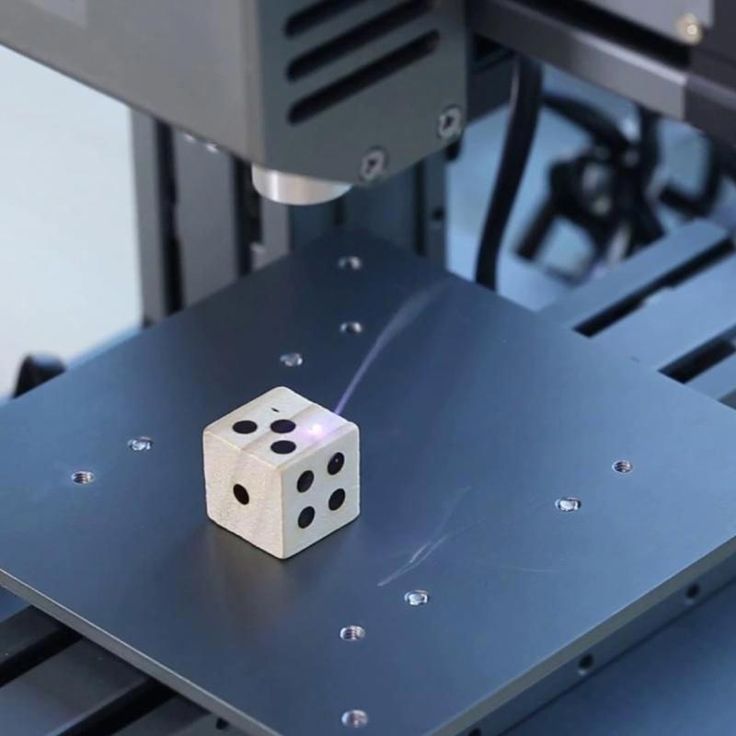 build size
build size build size
build size
